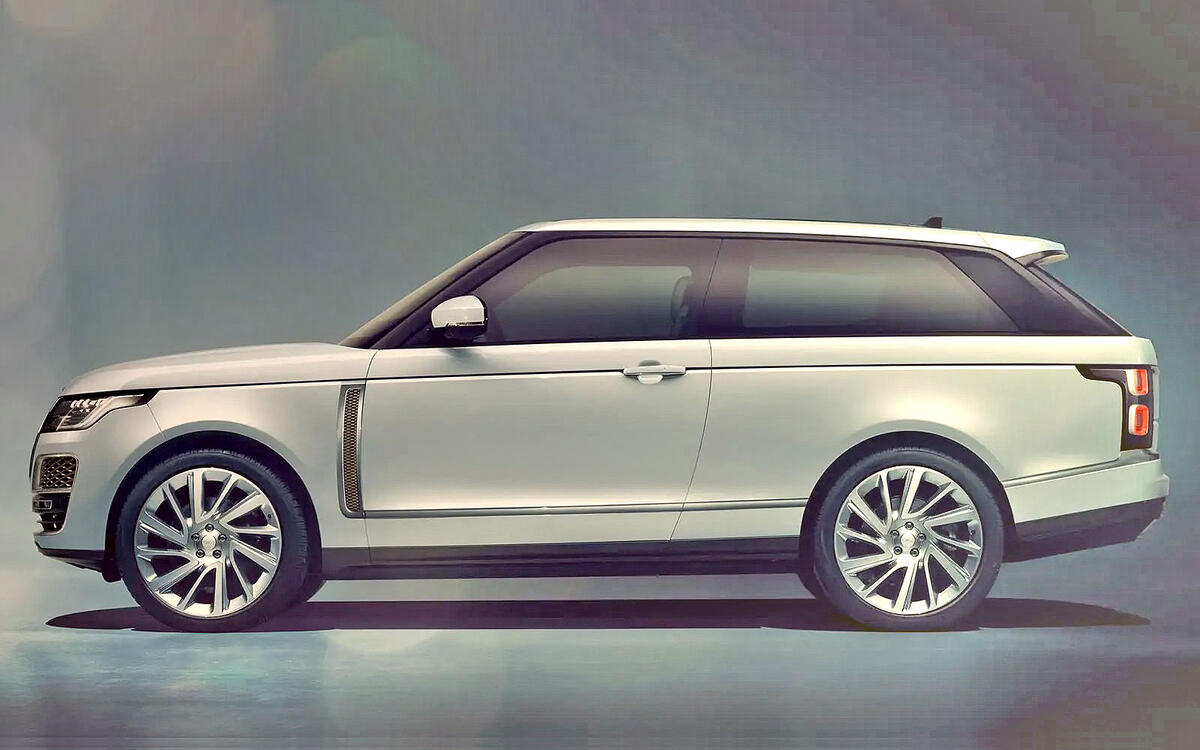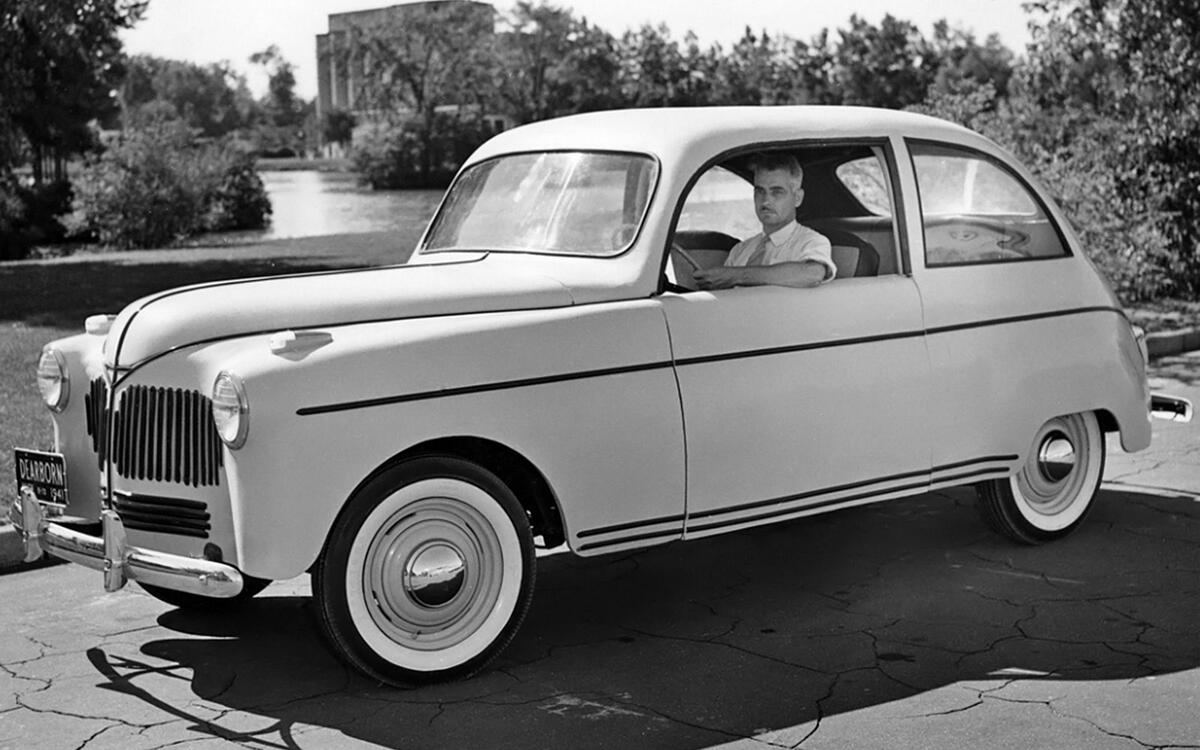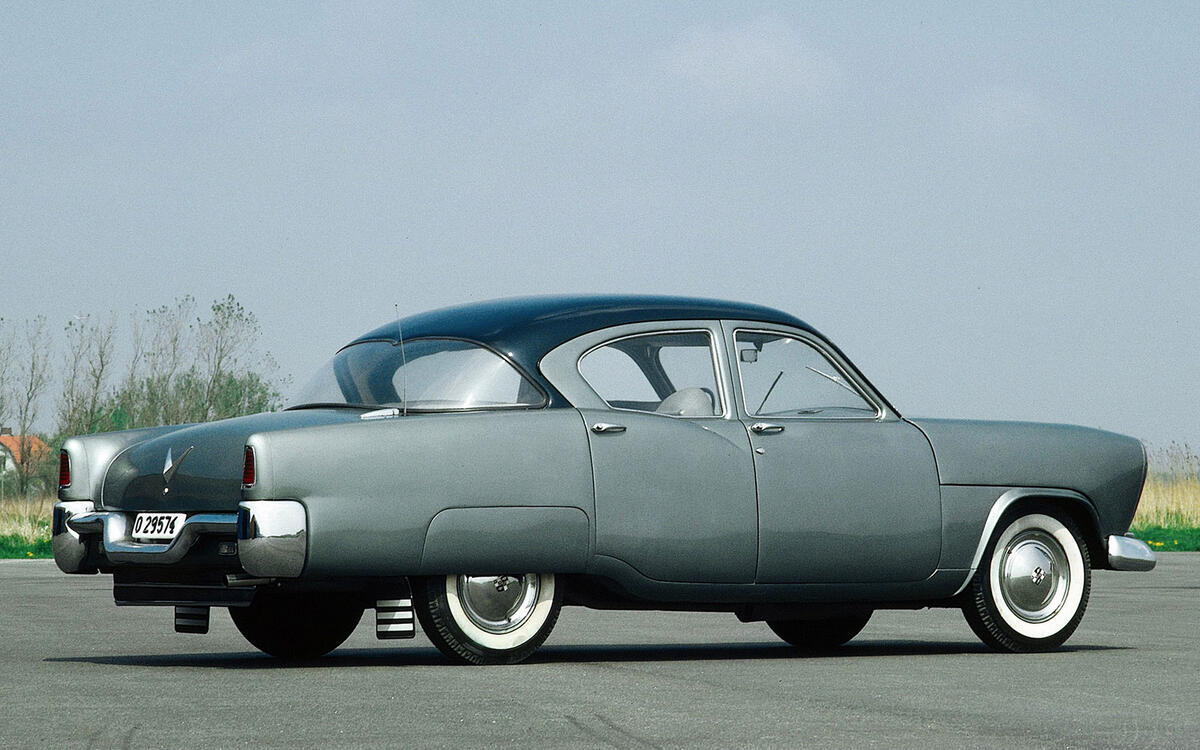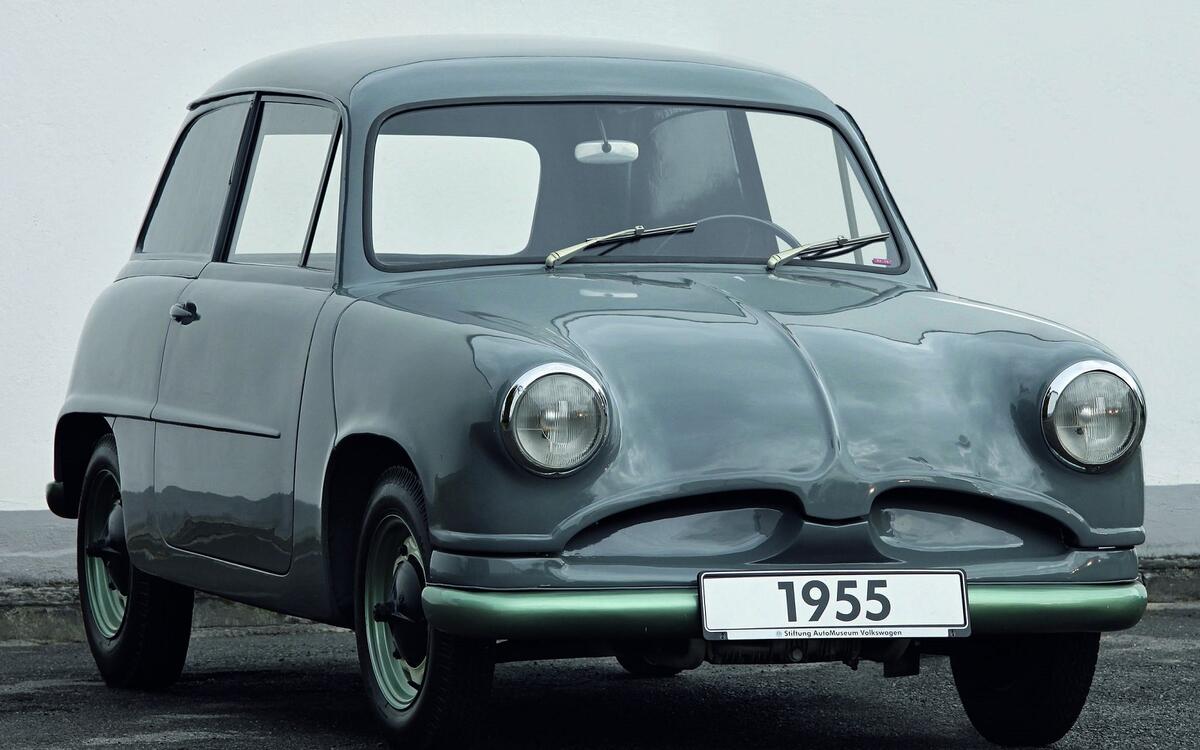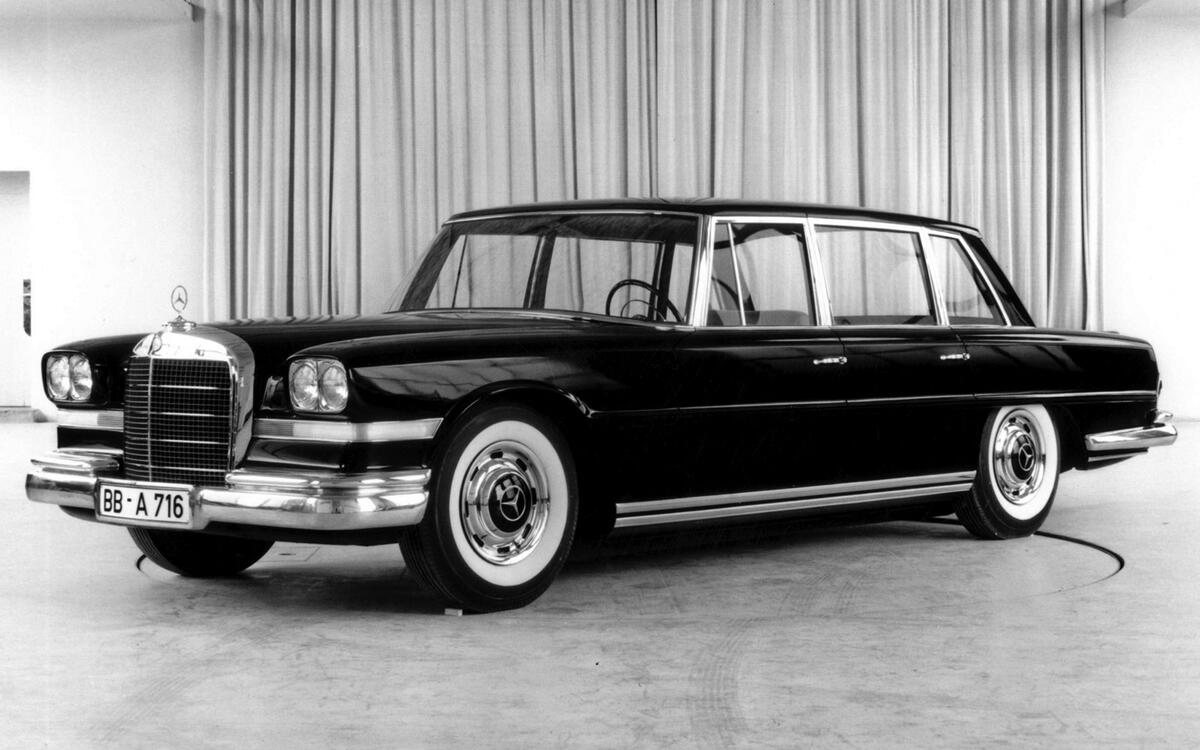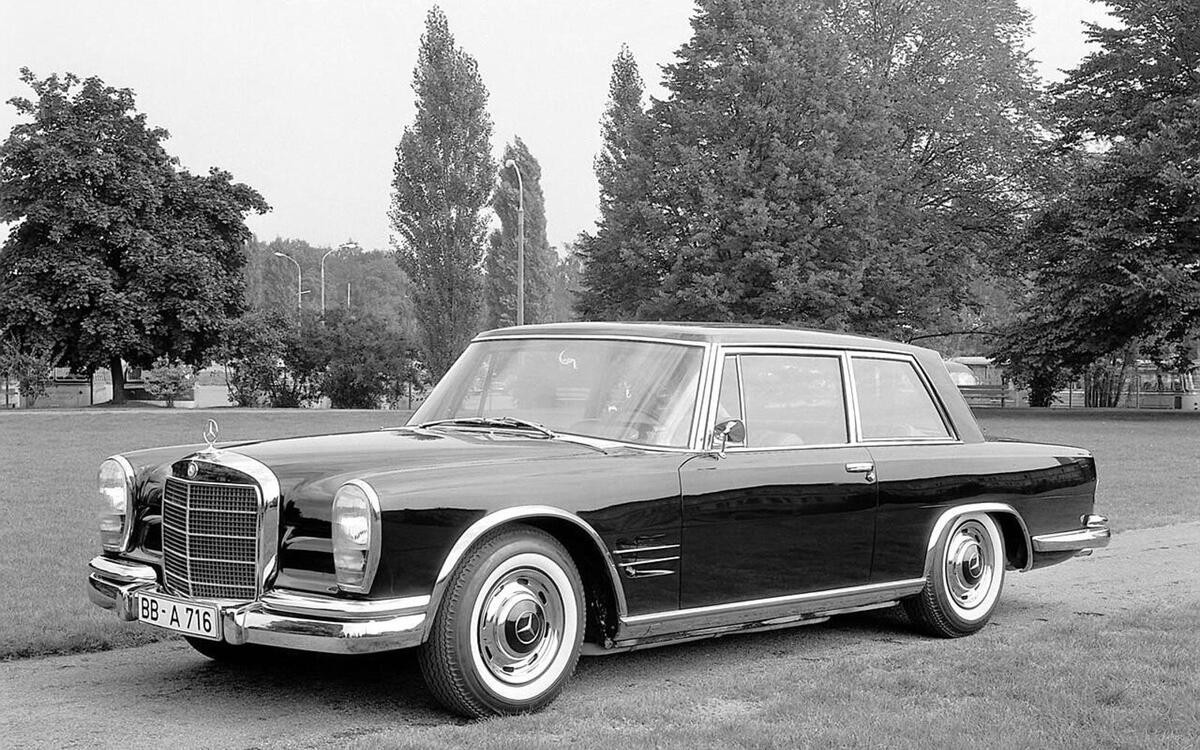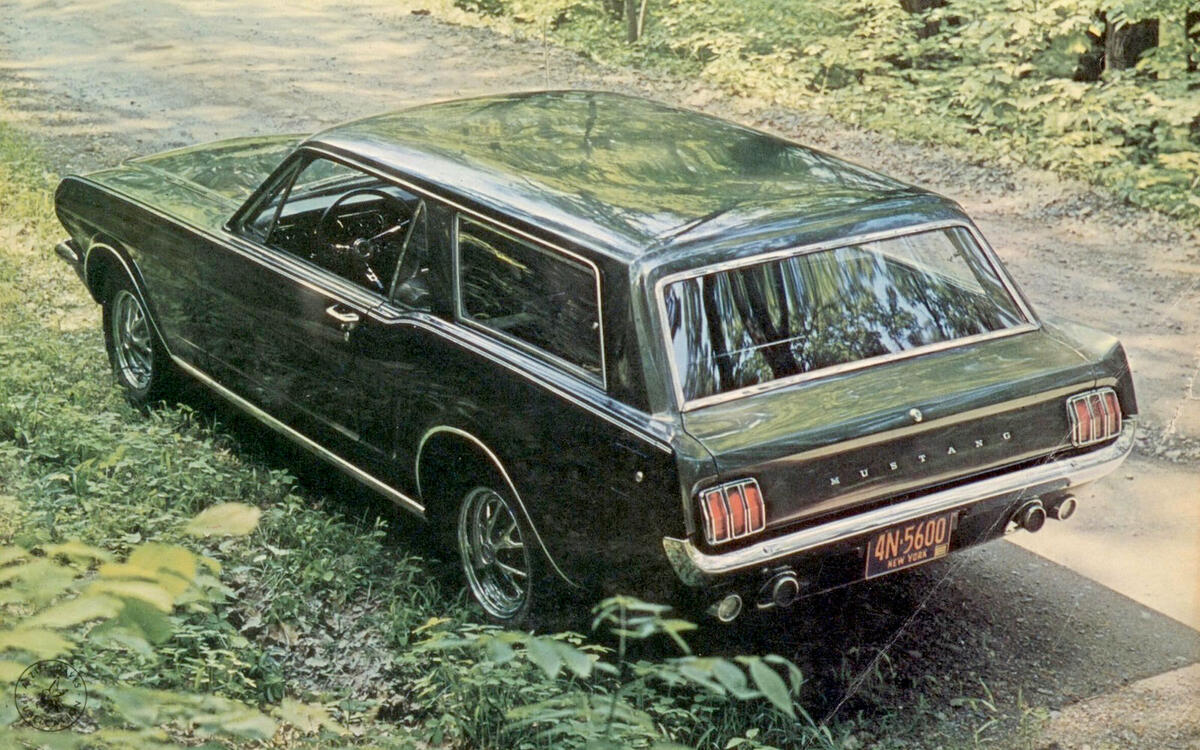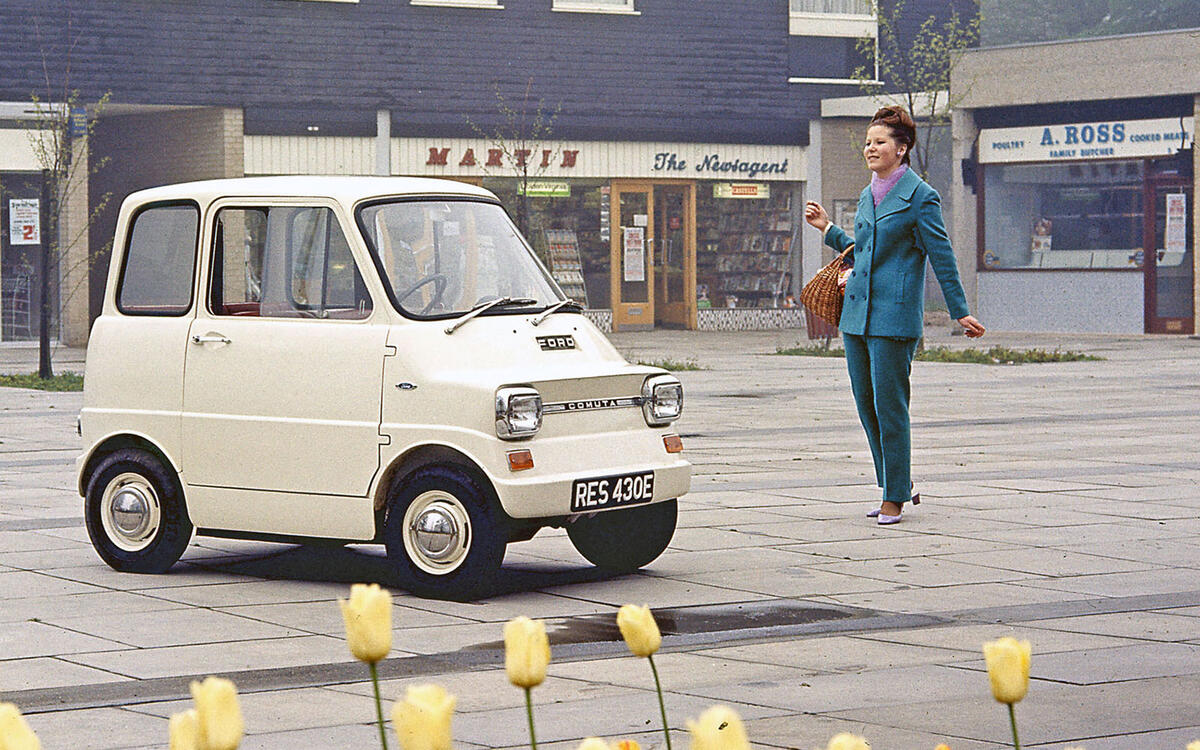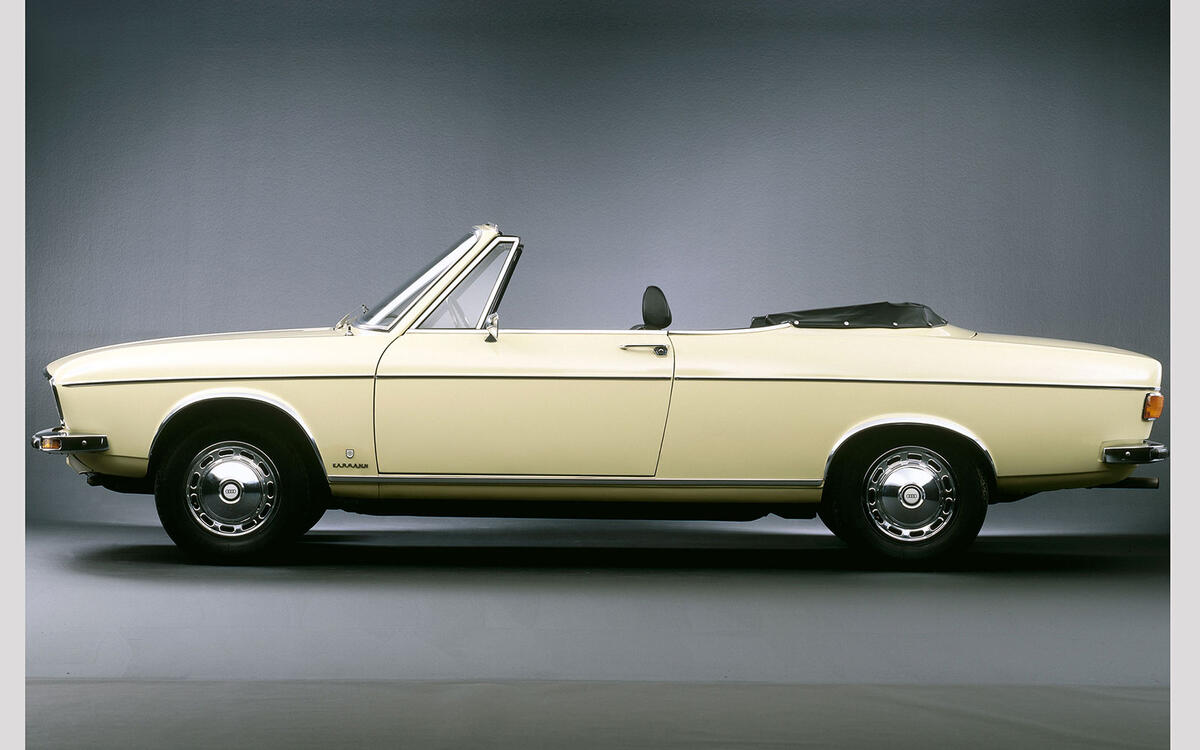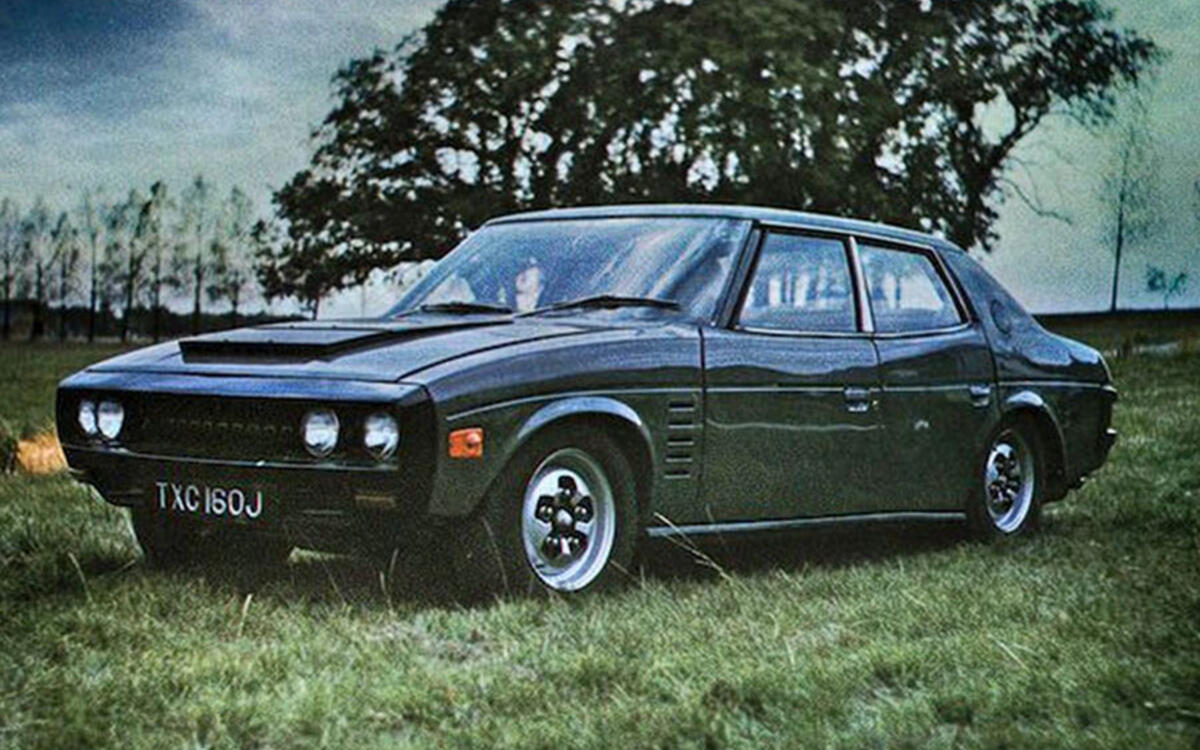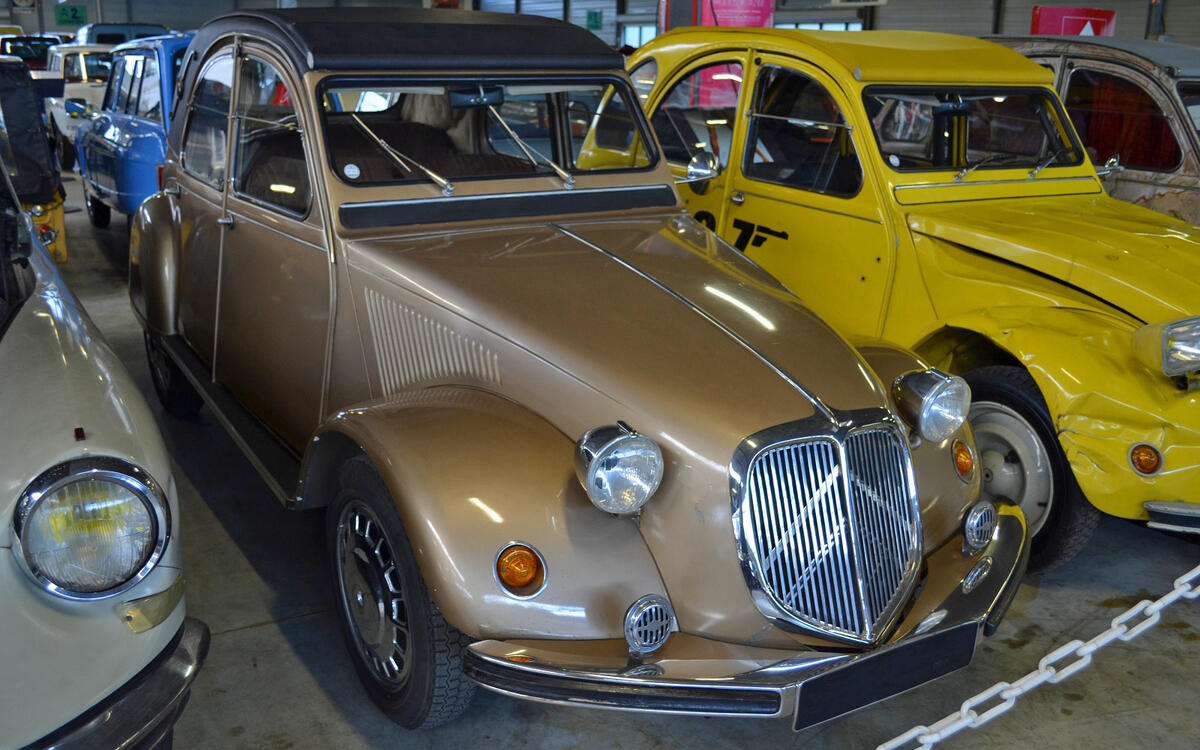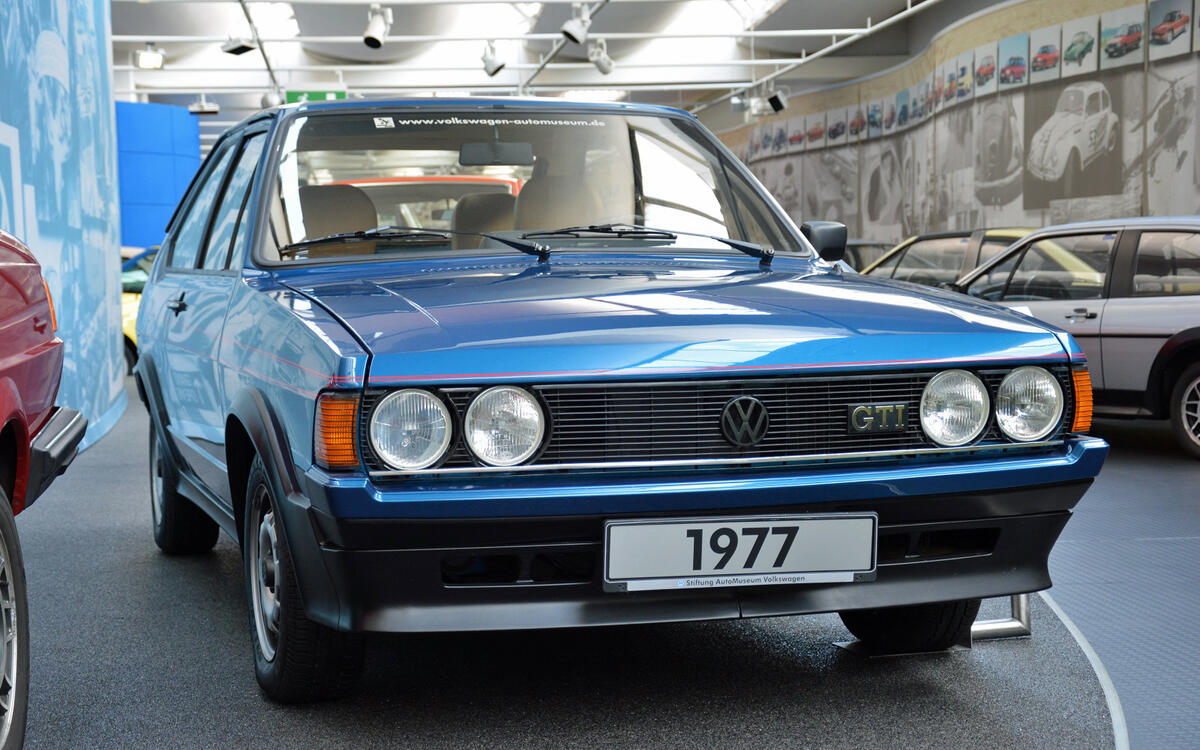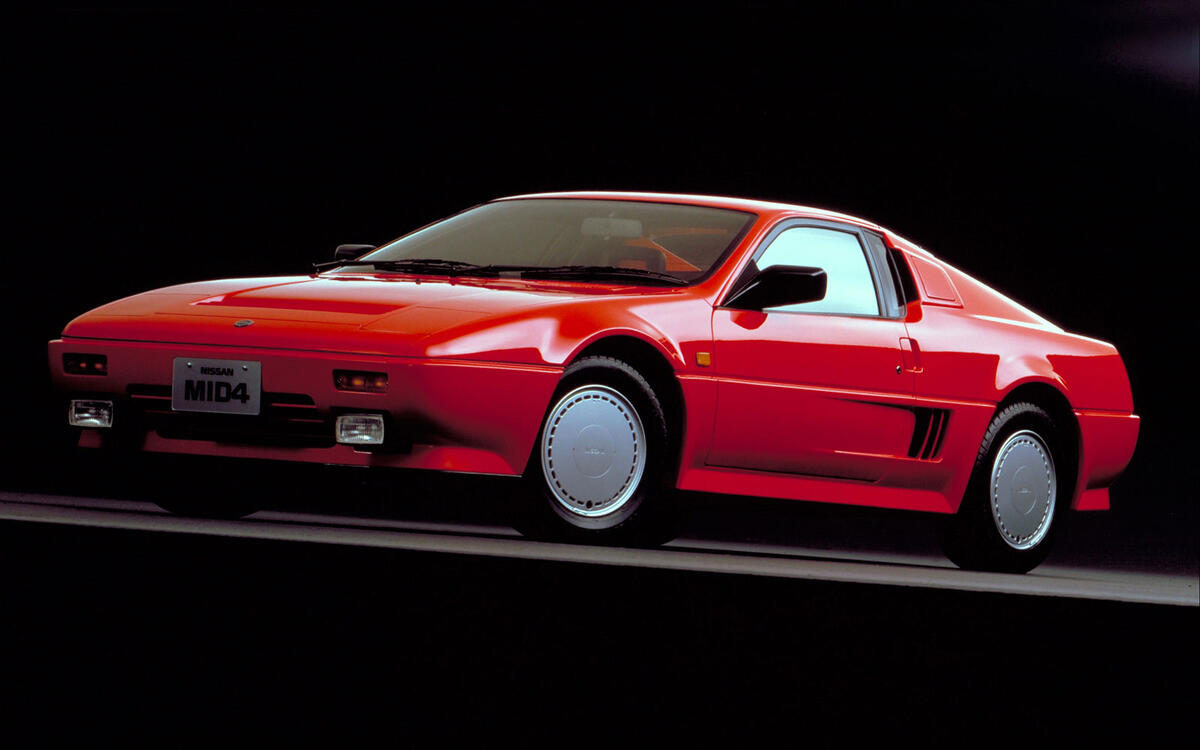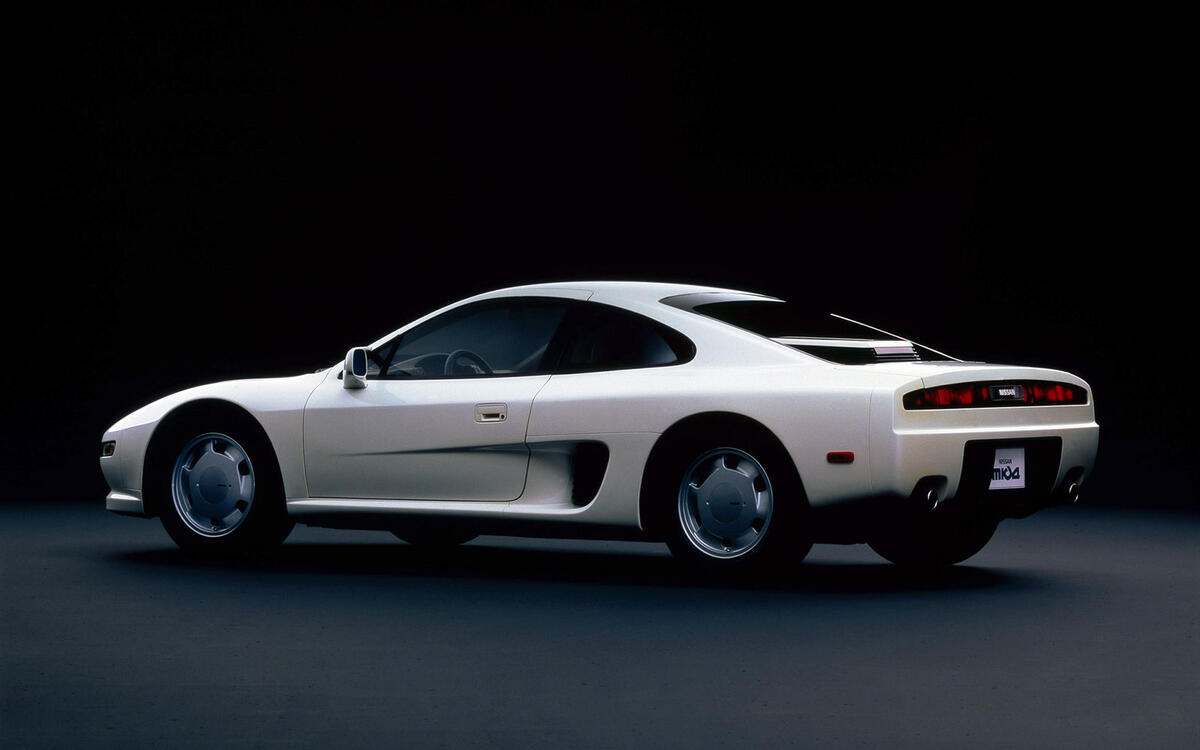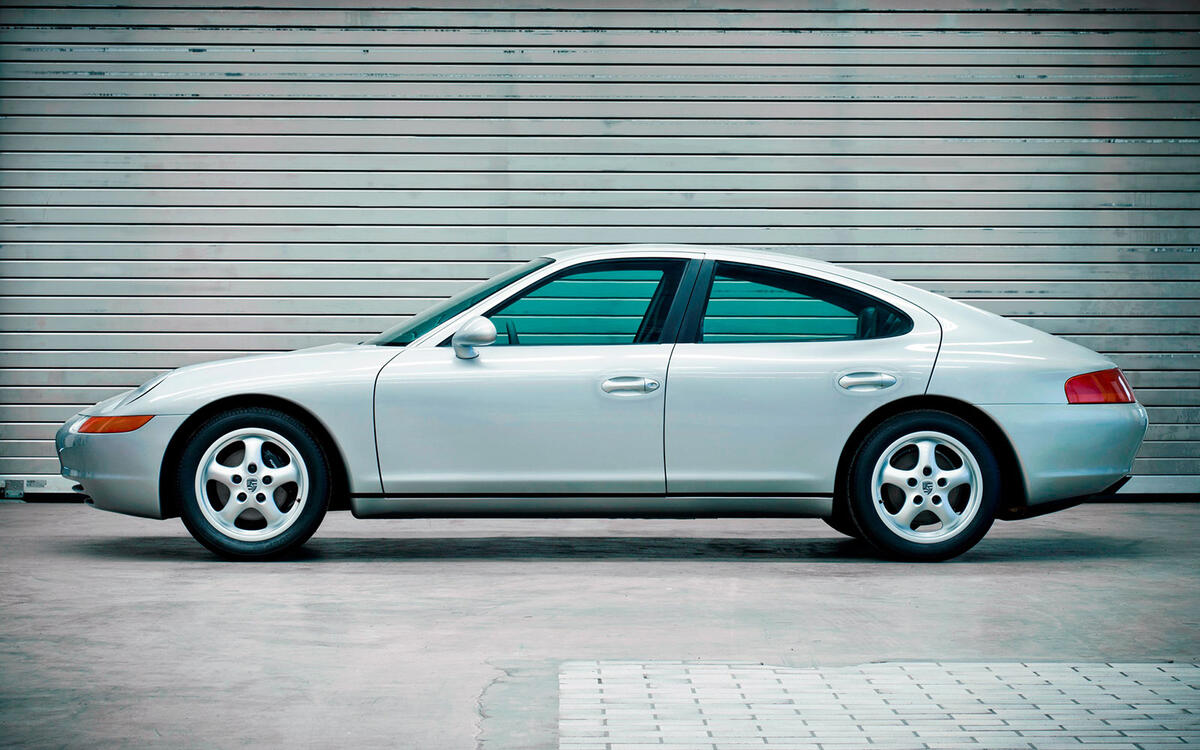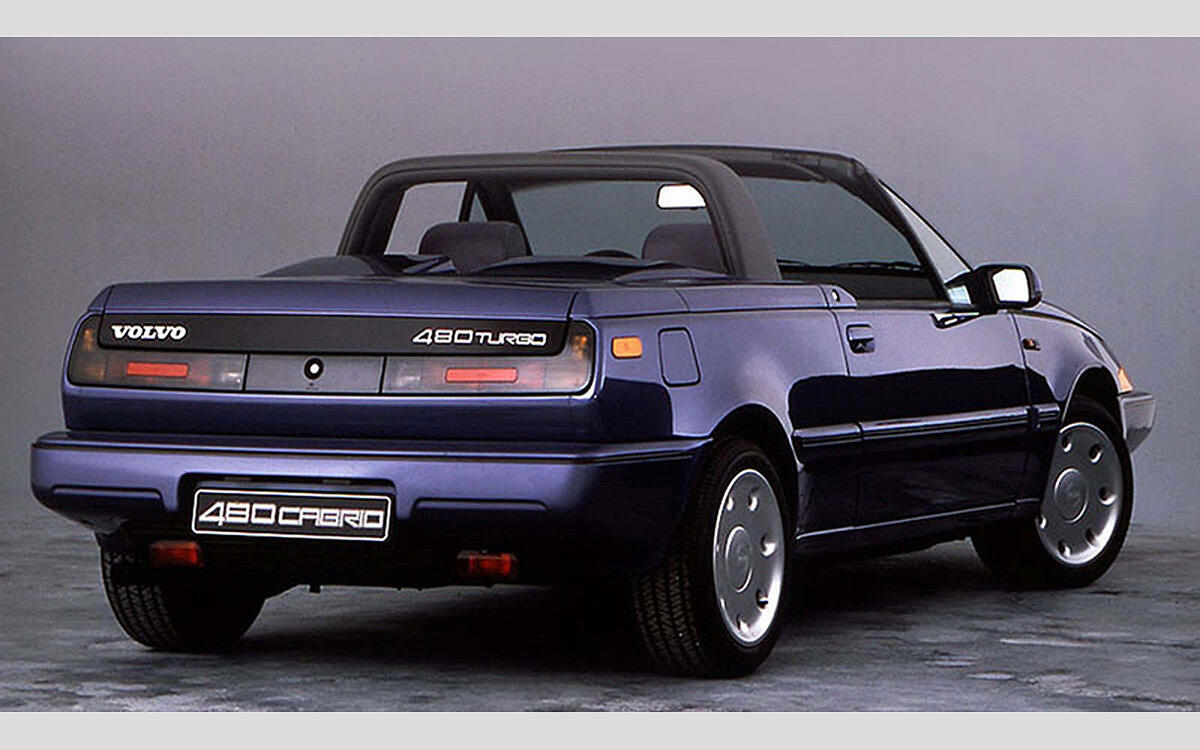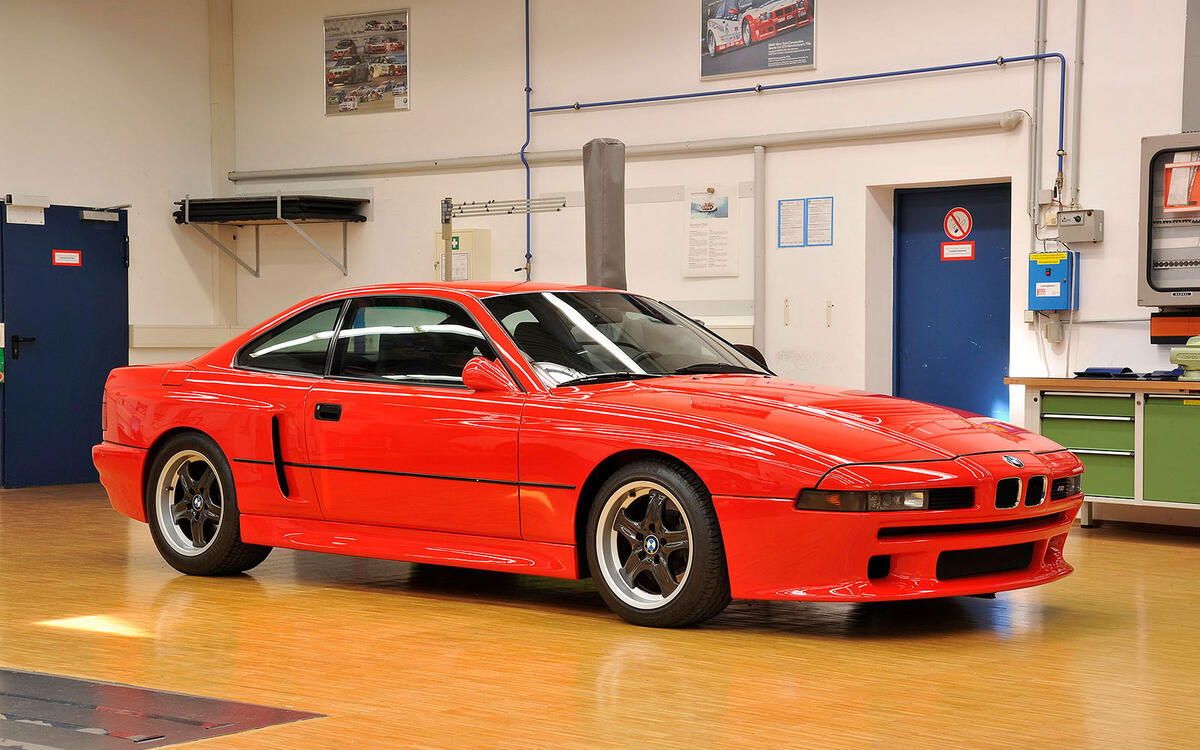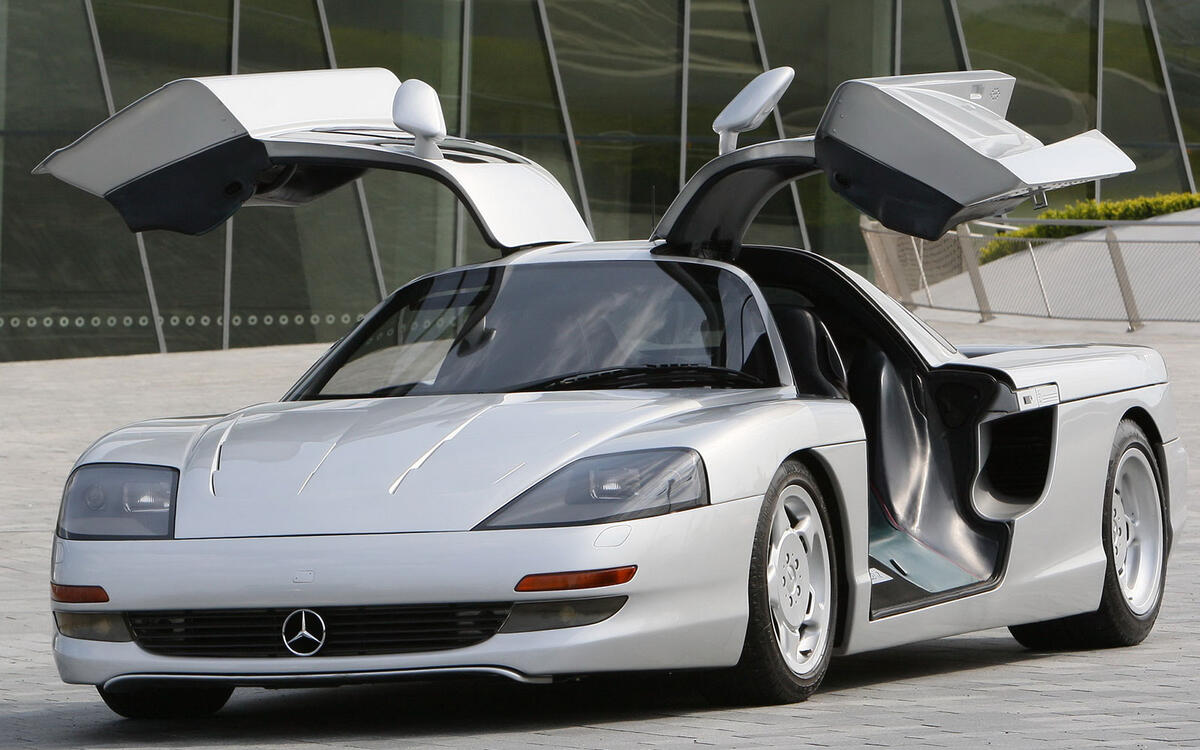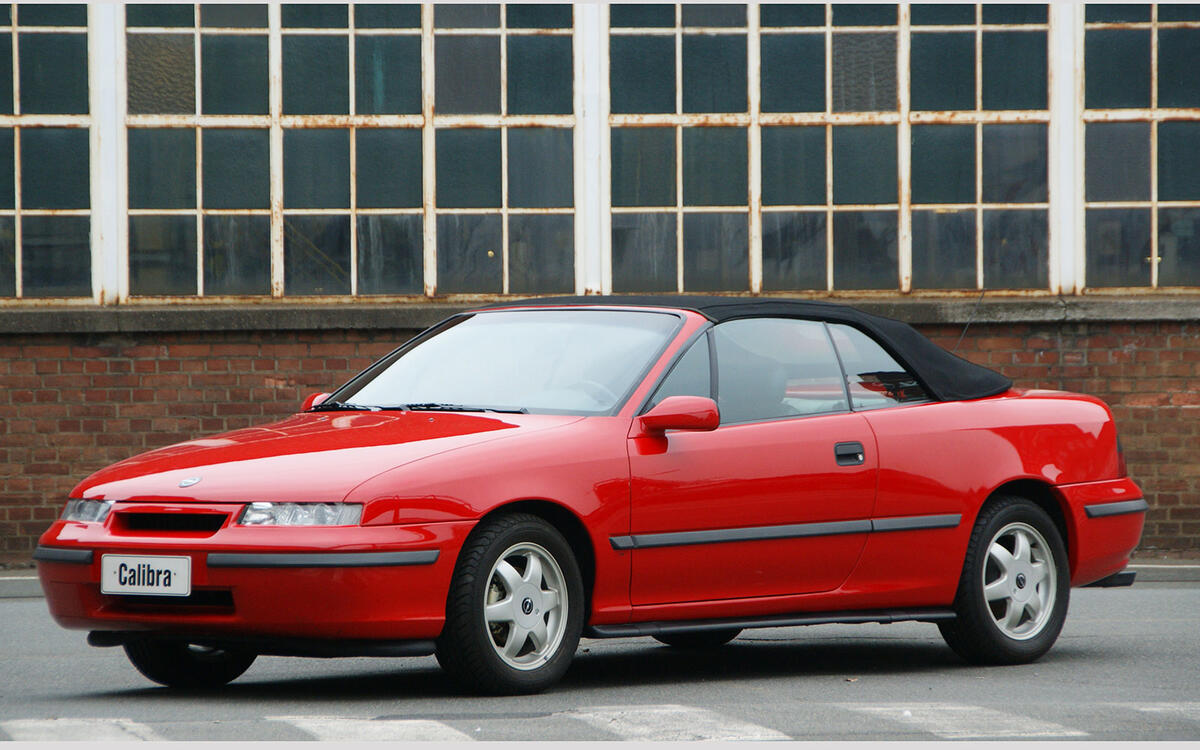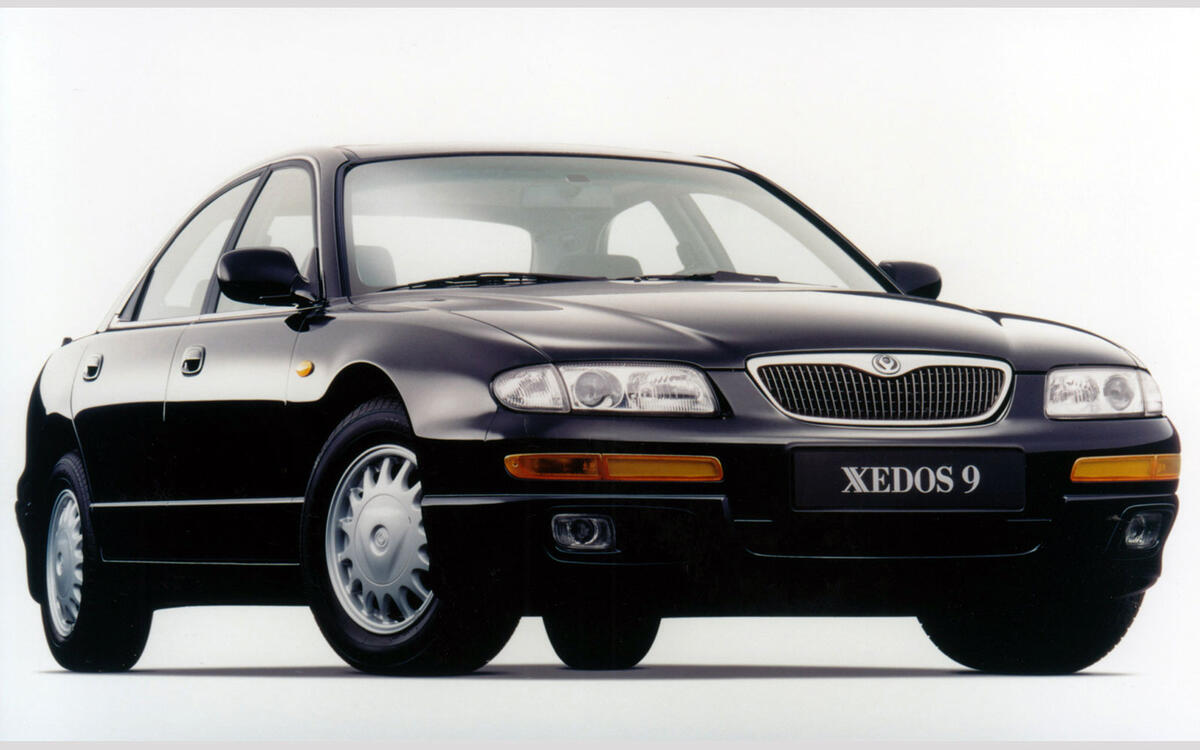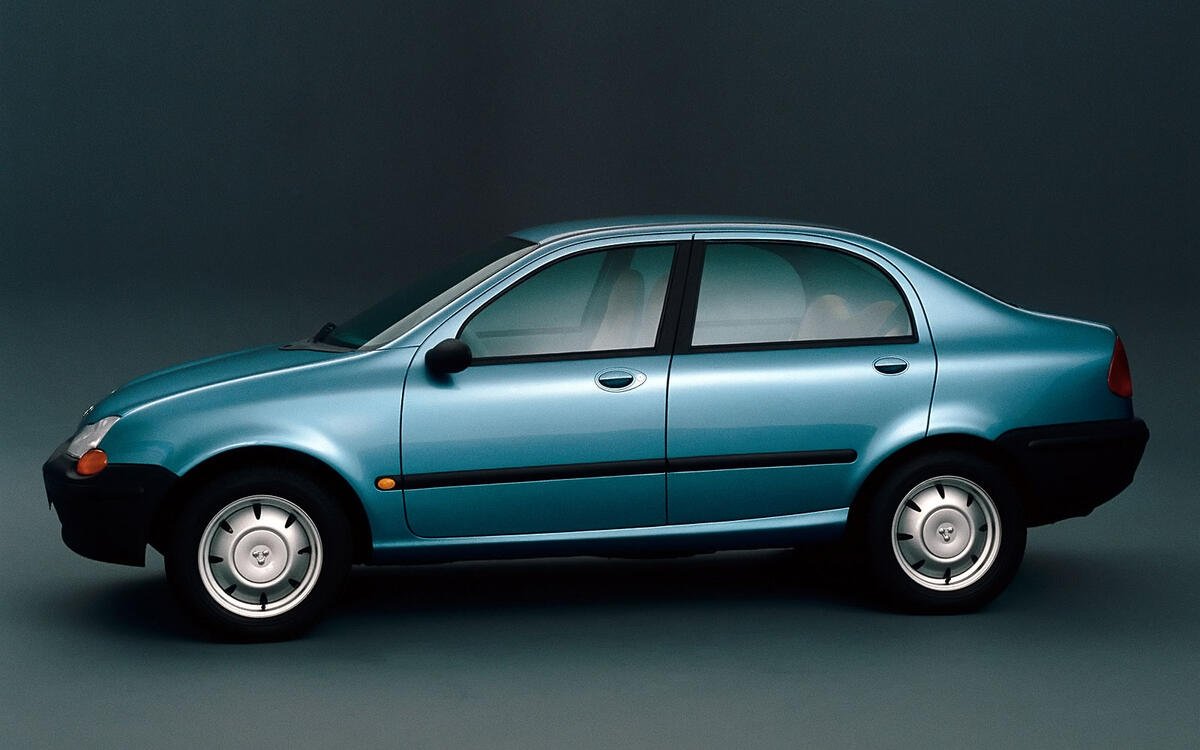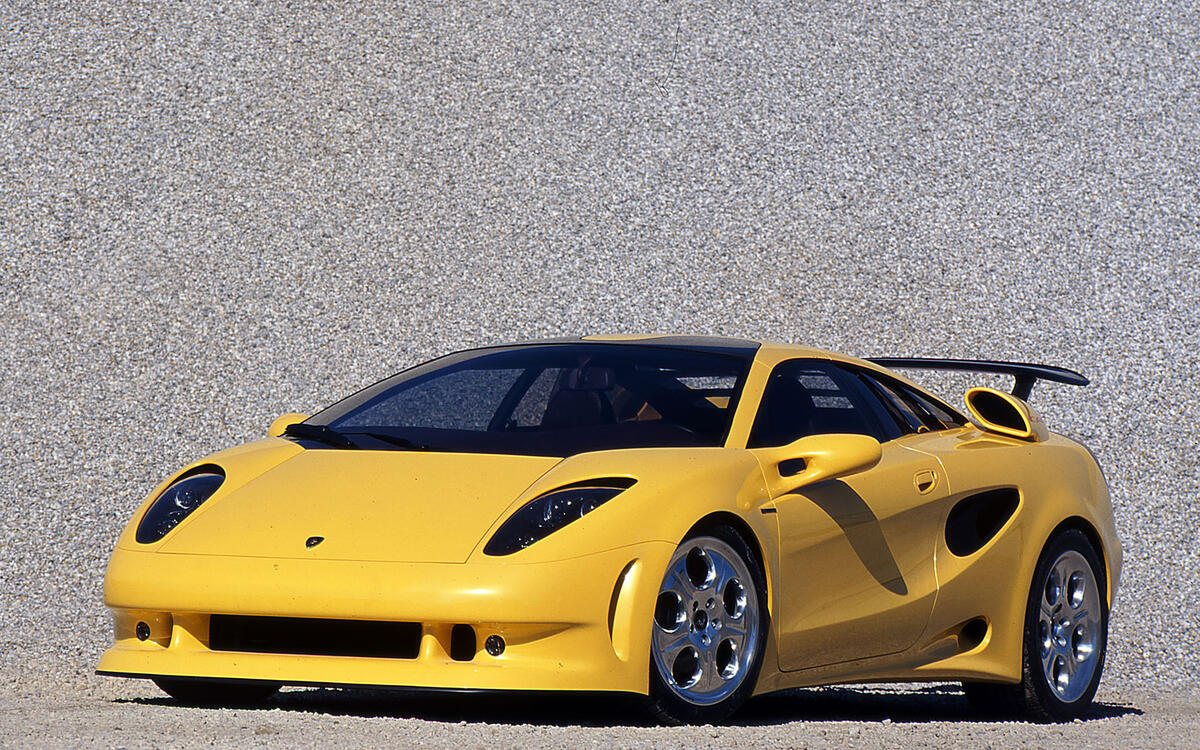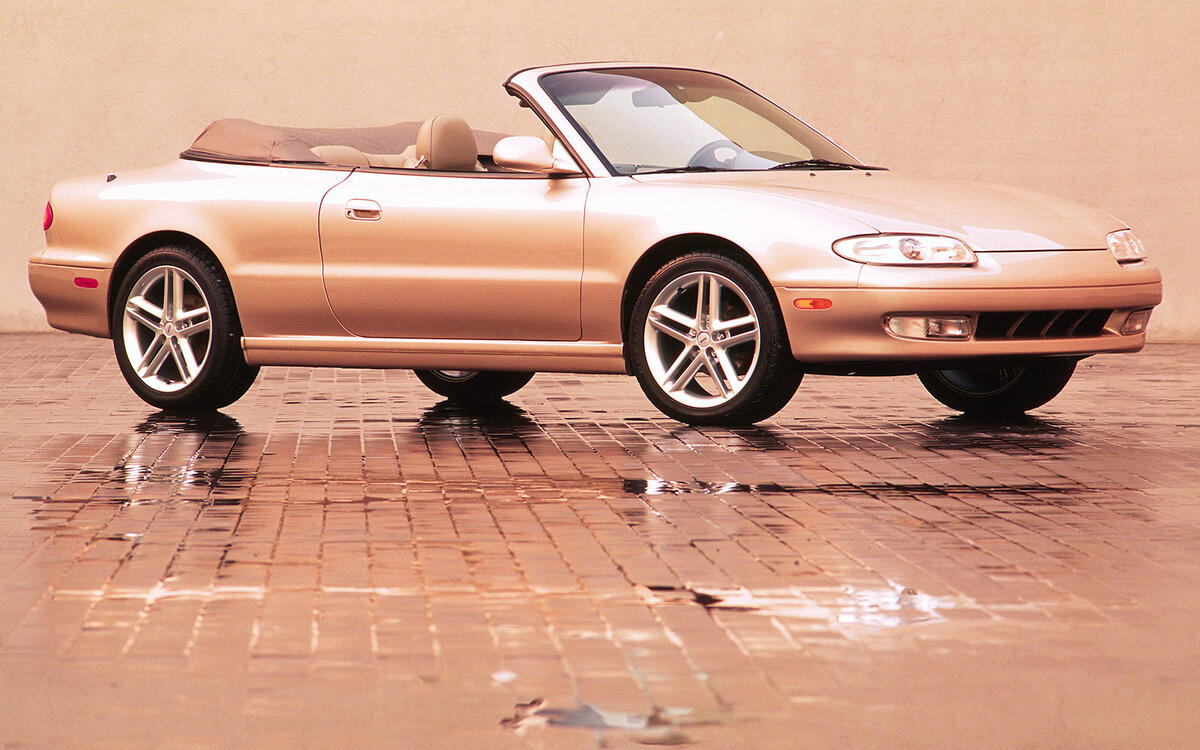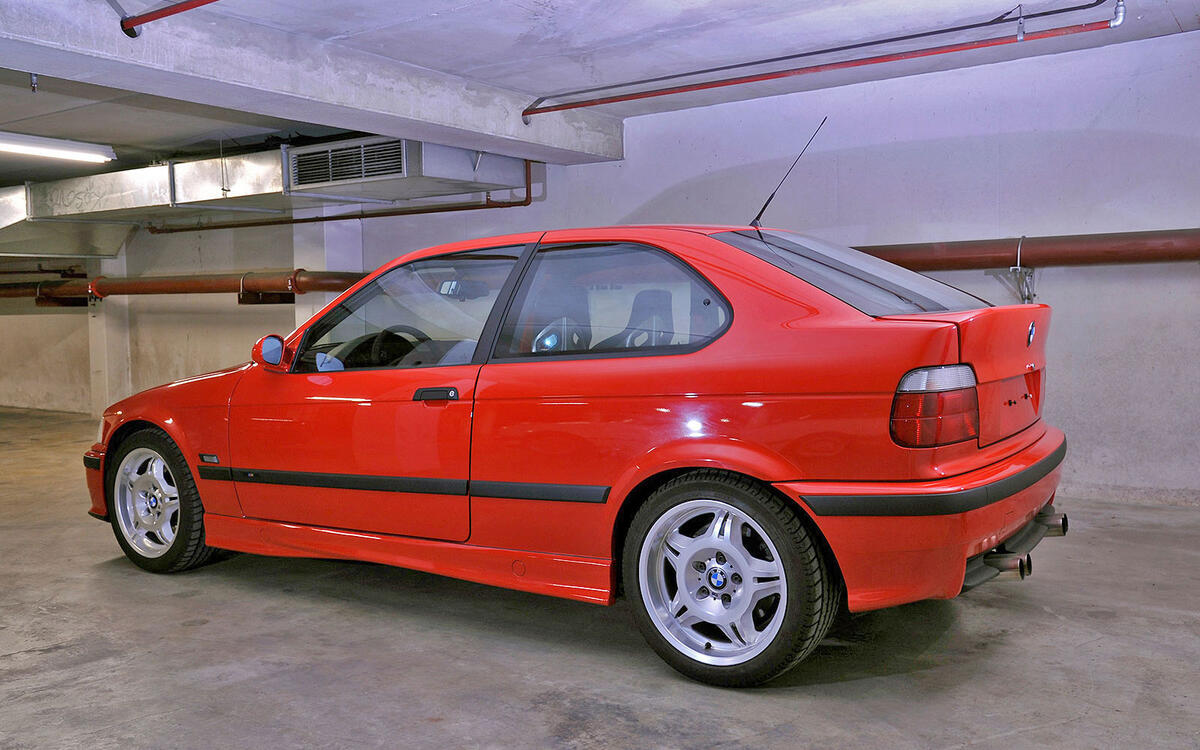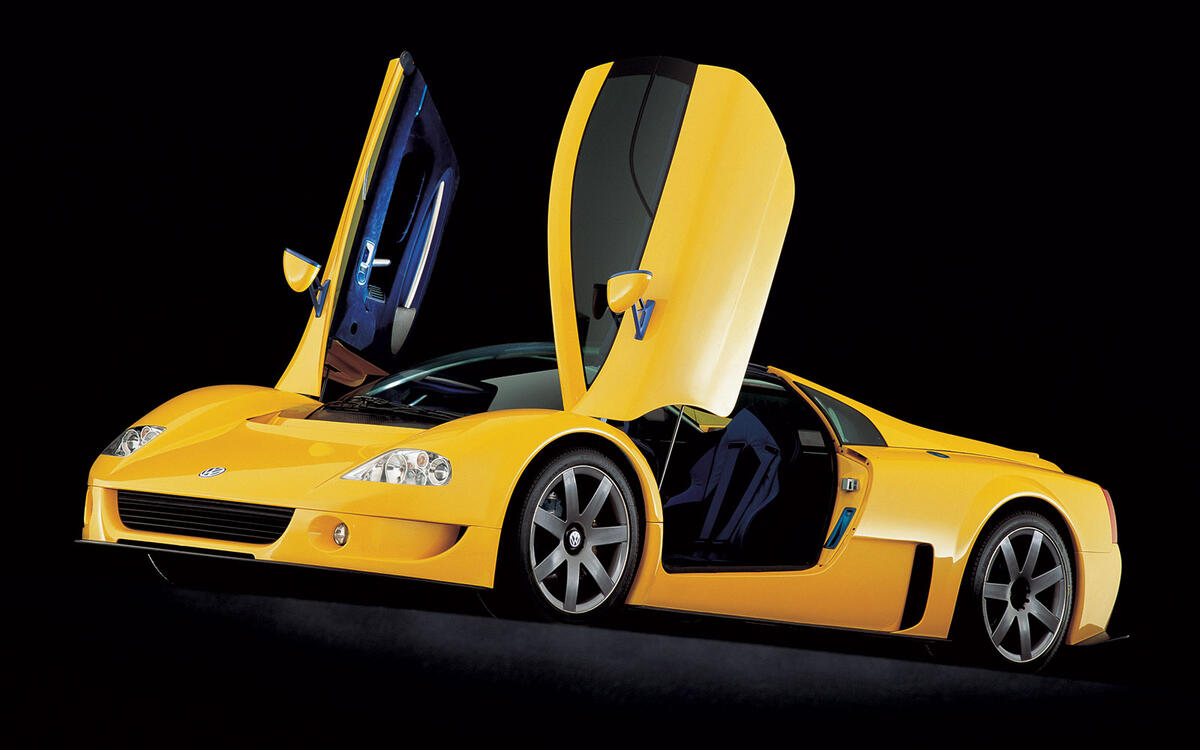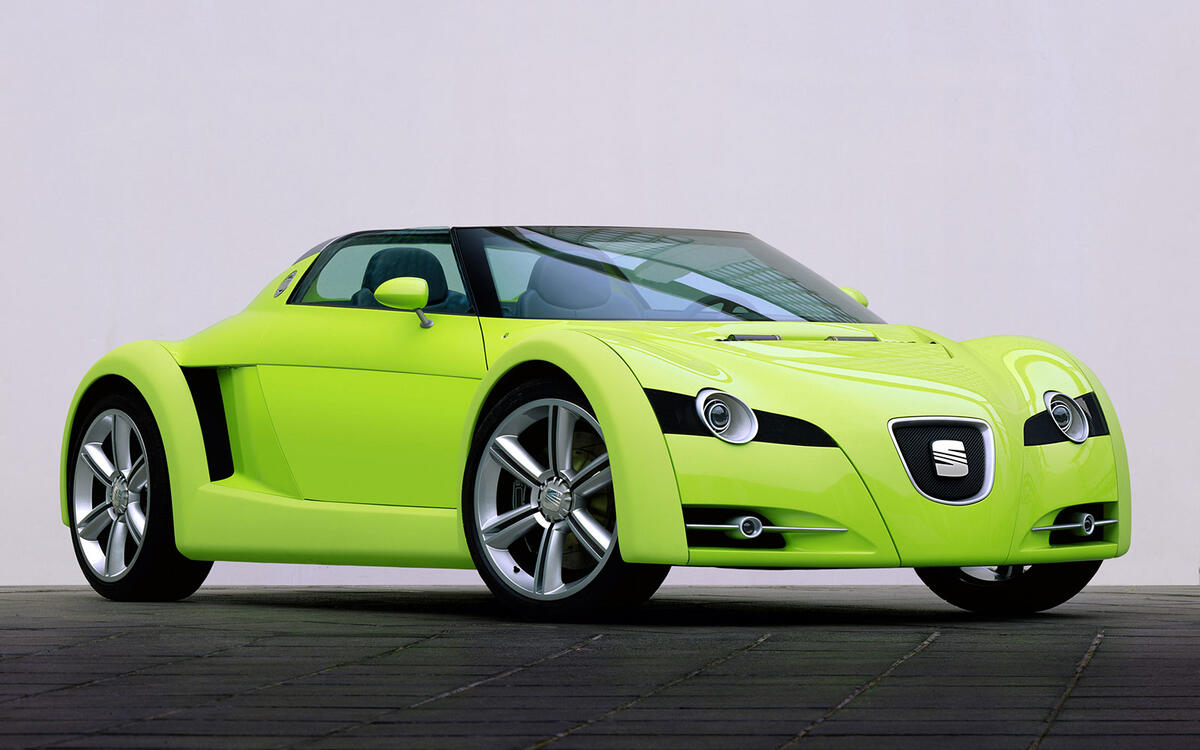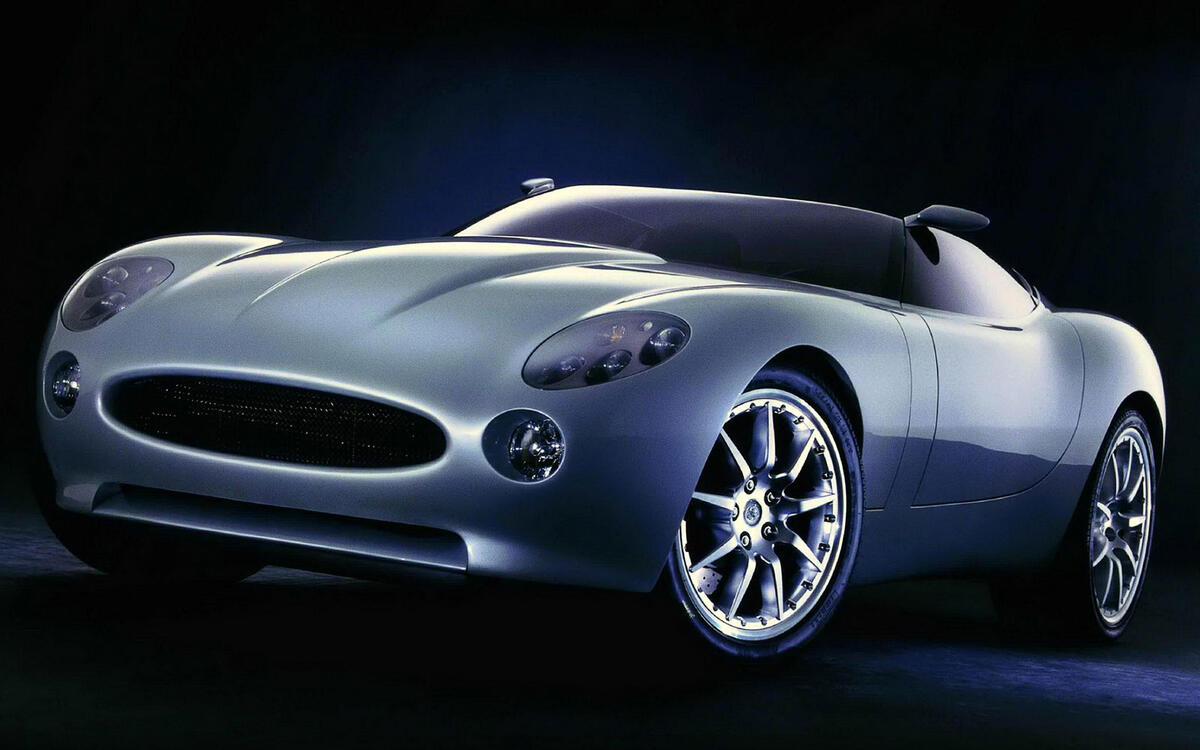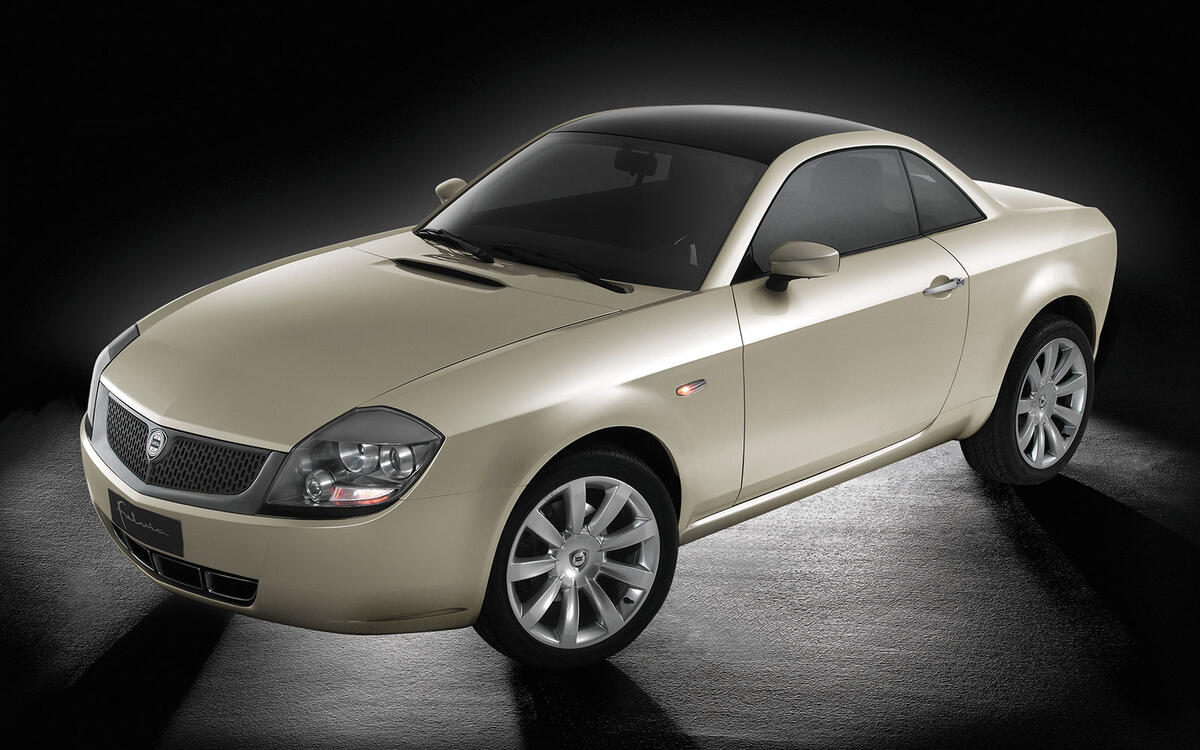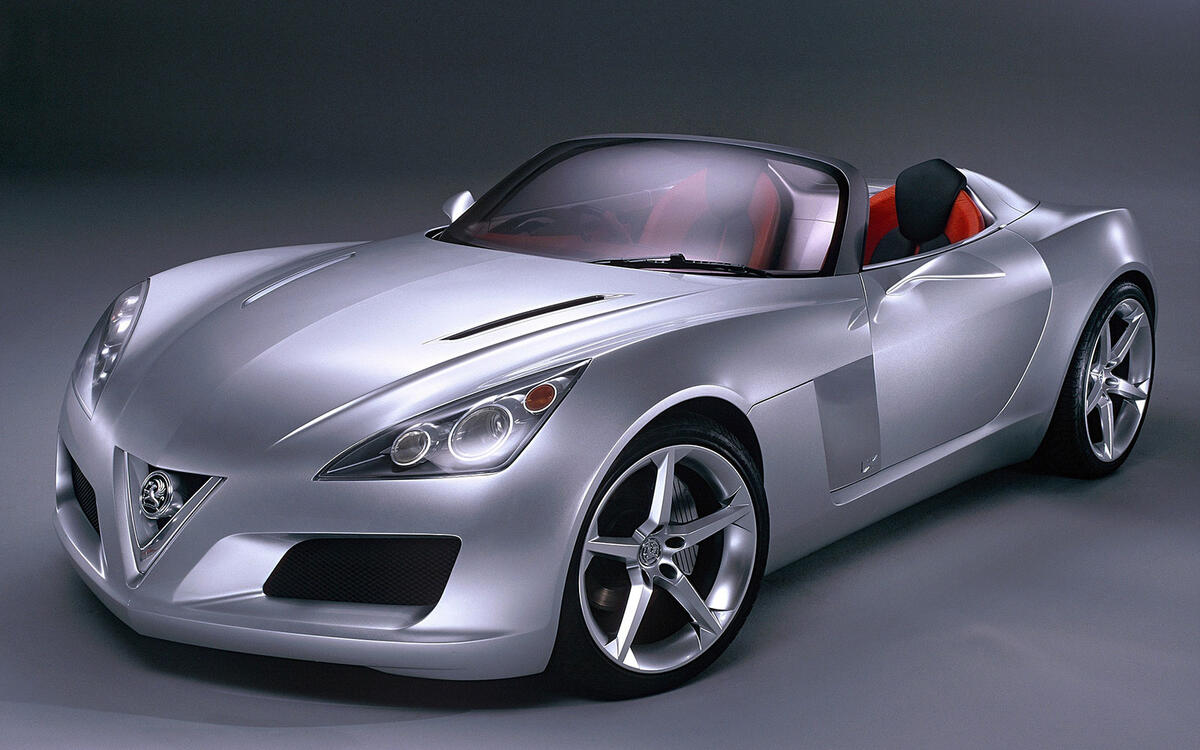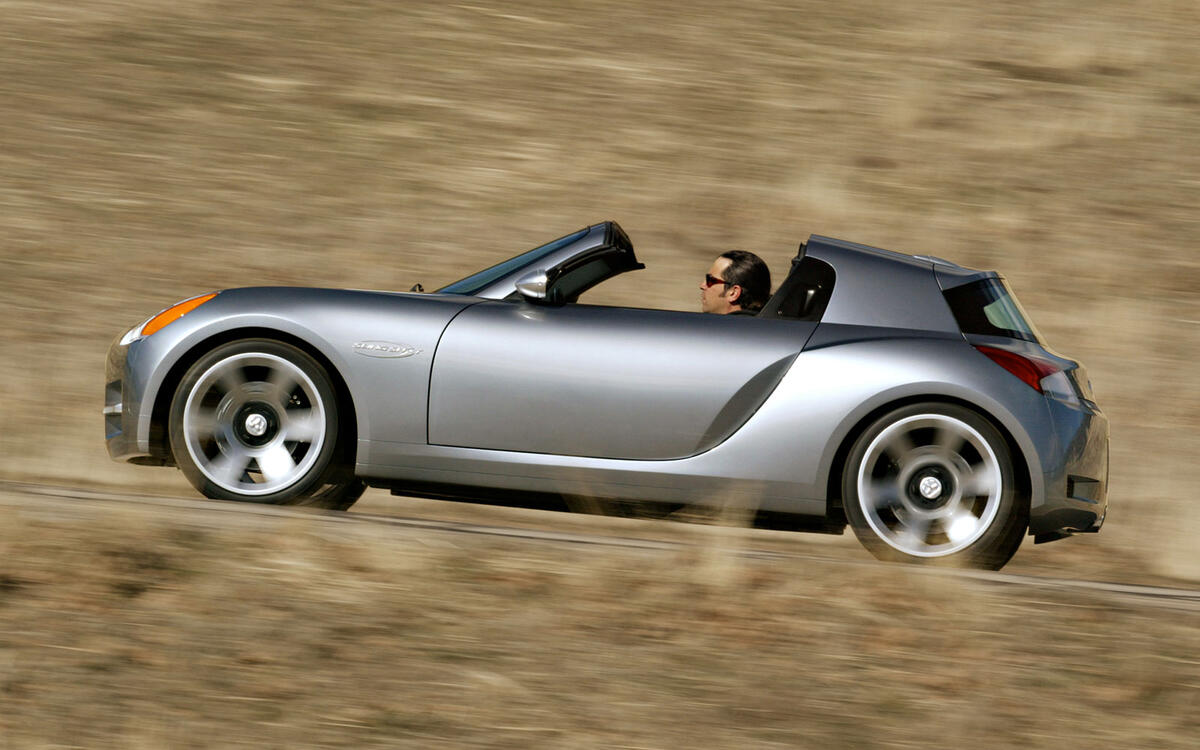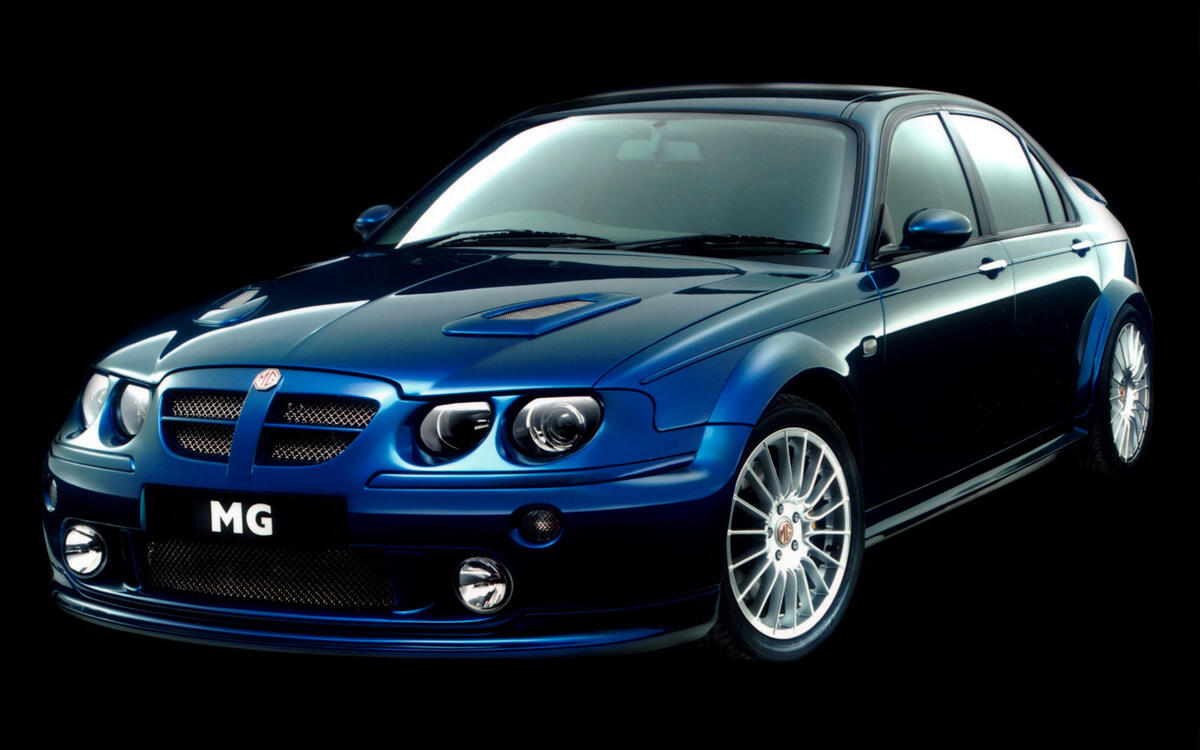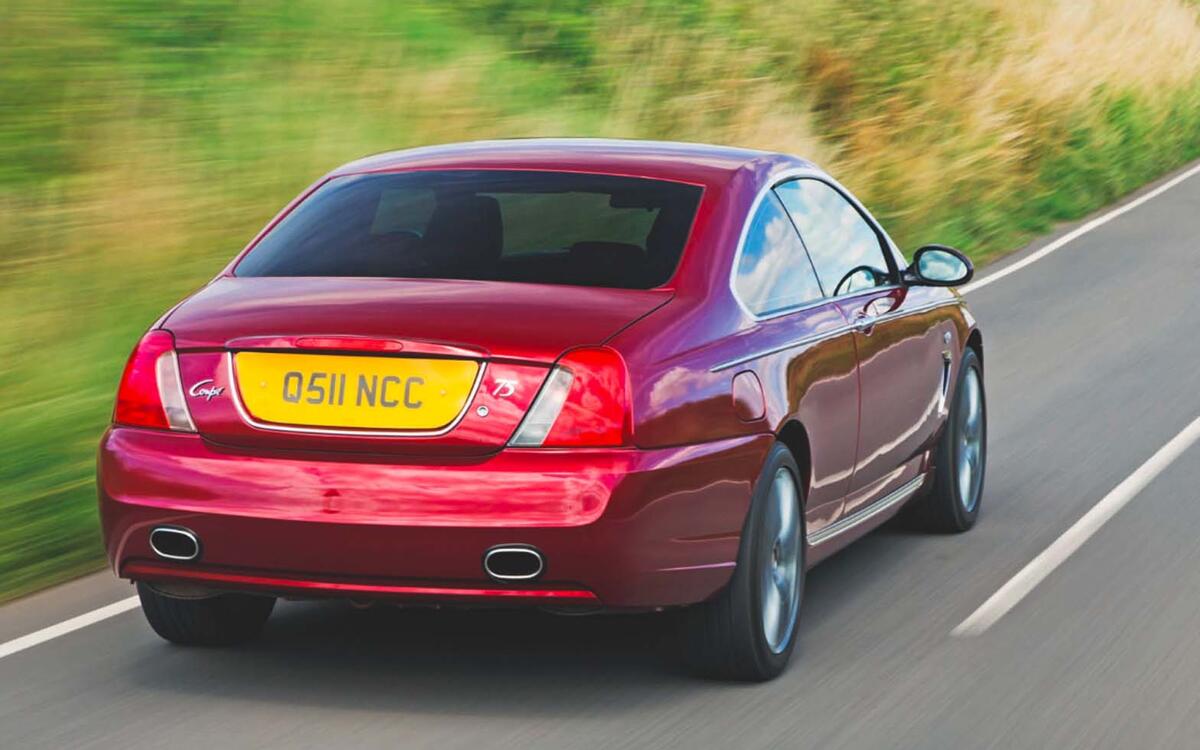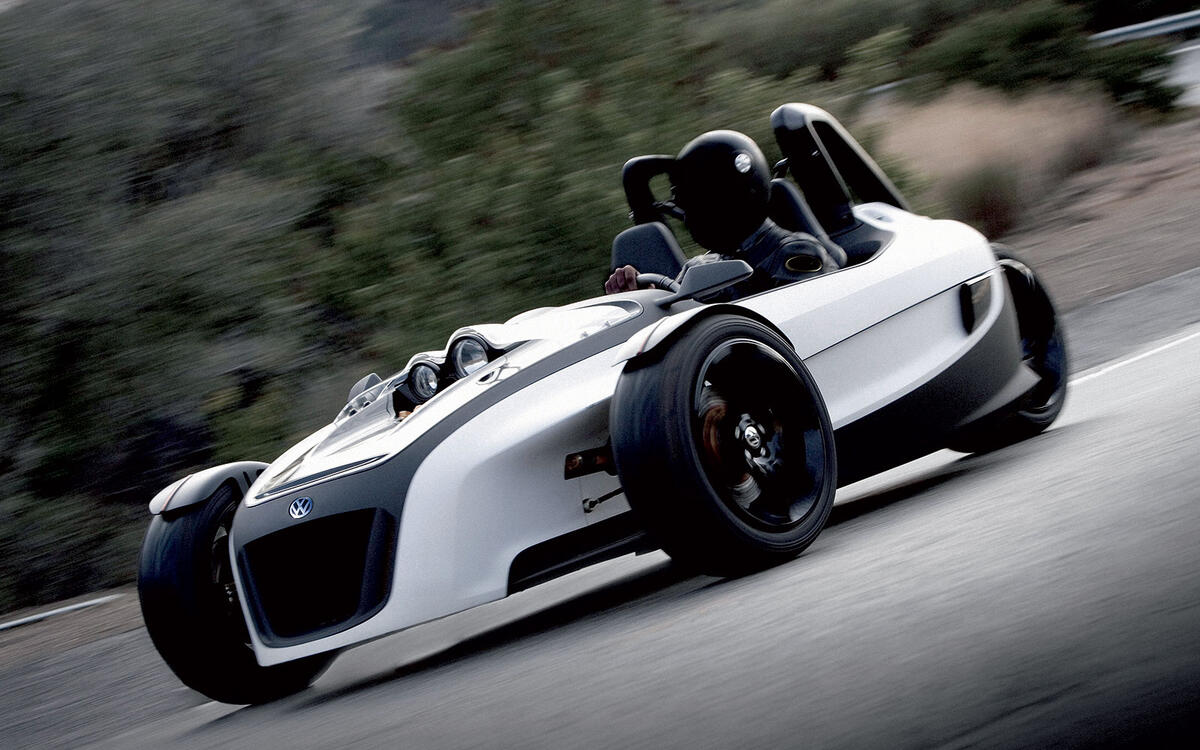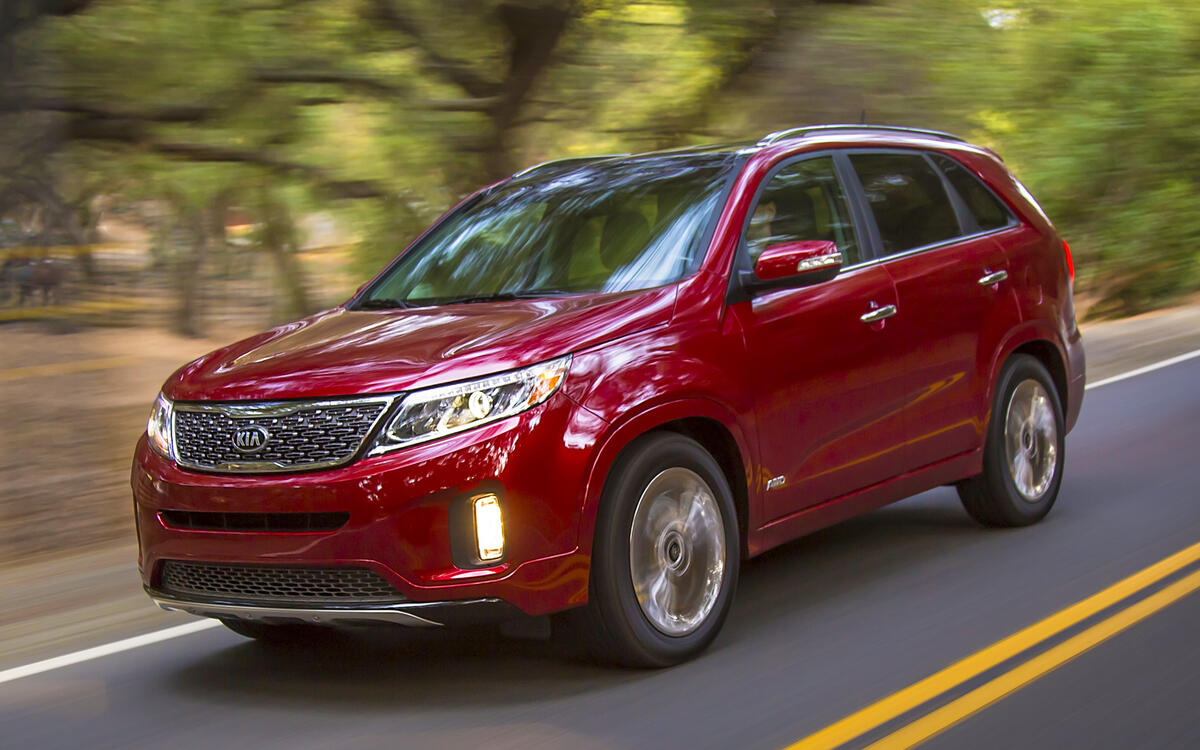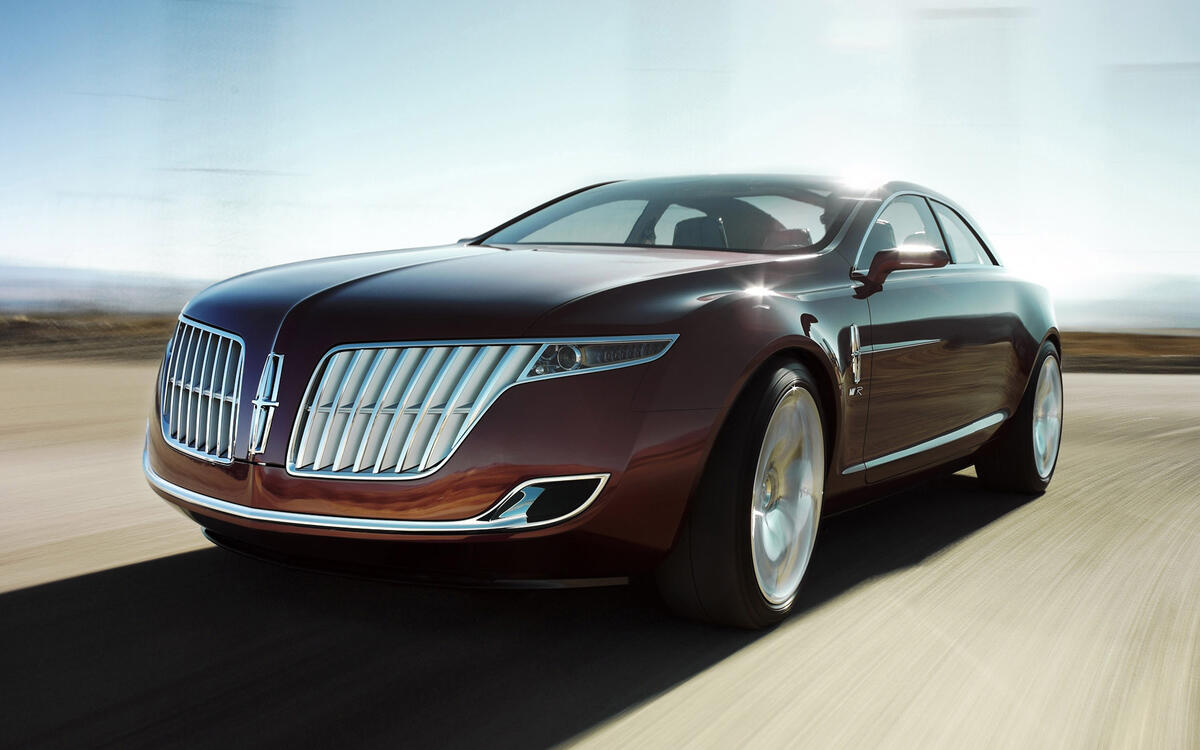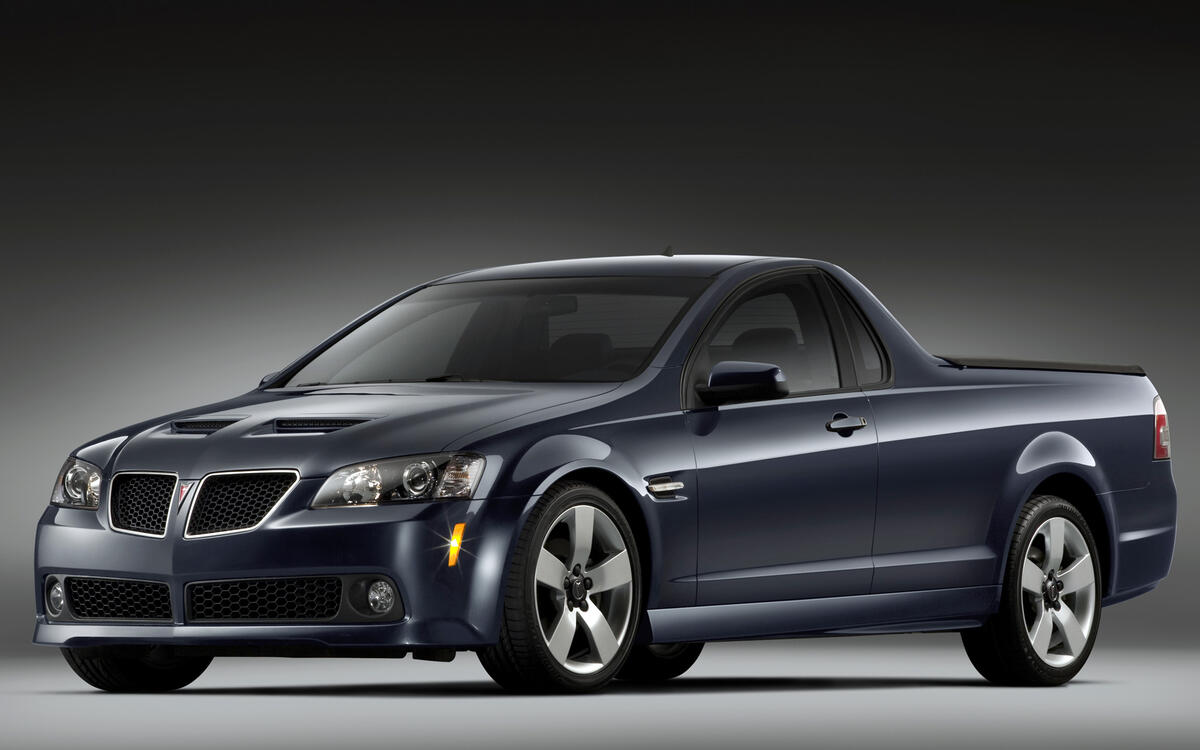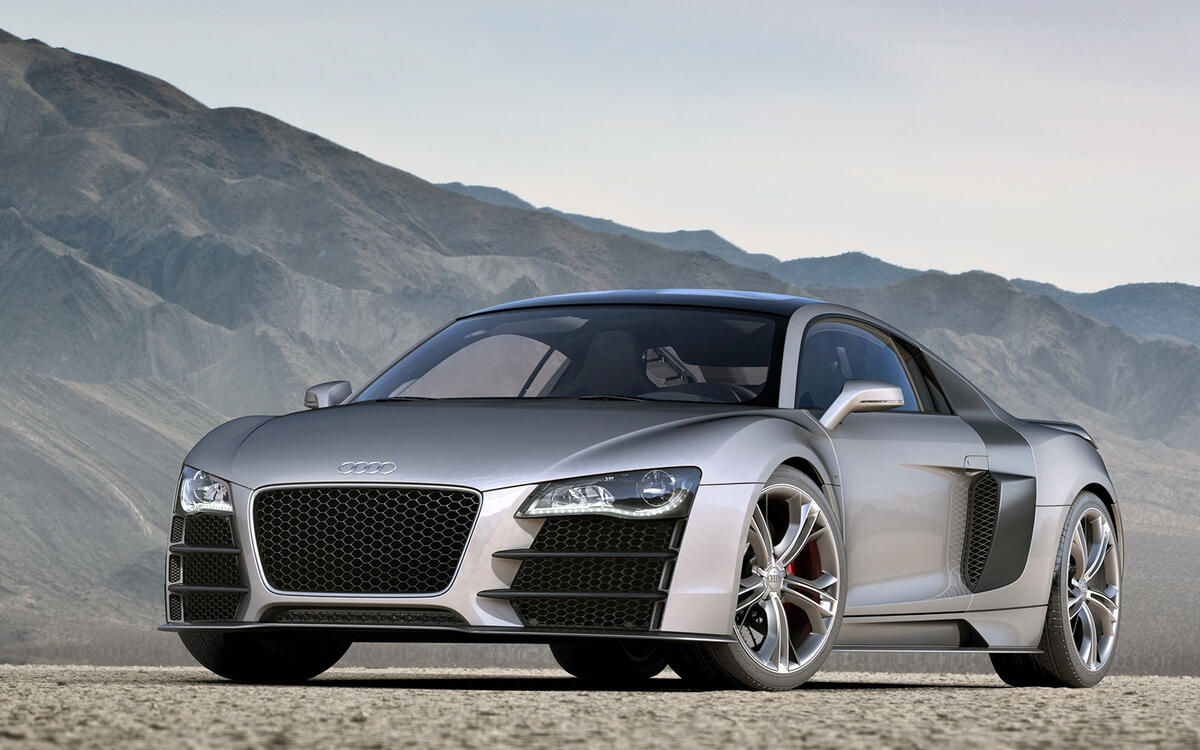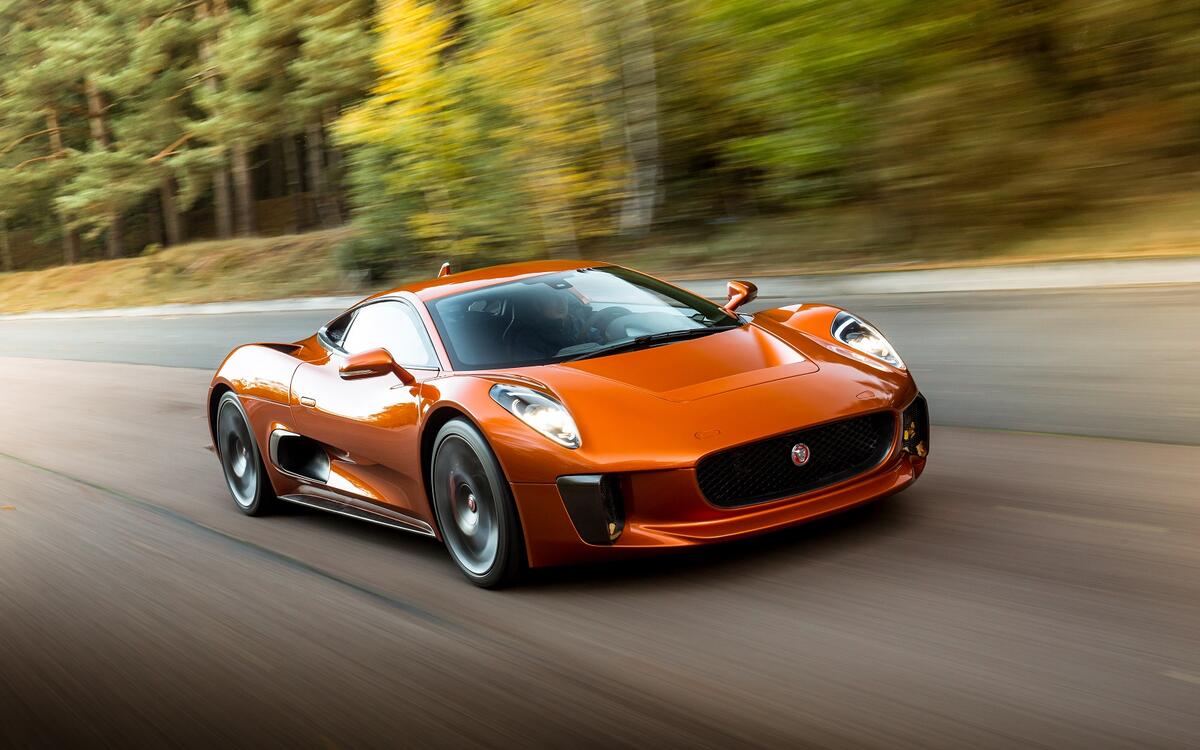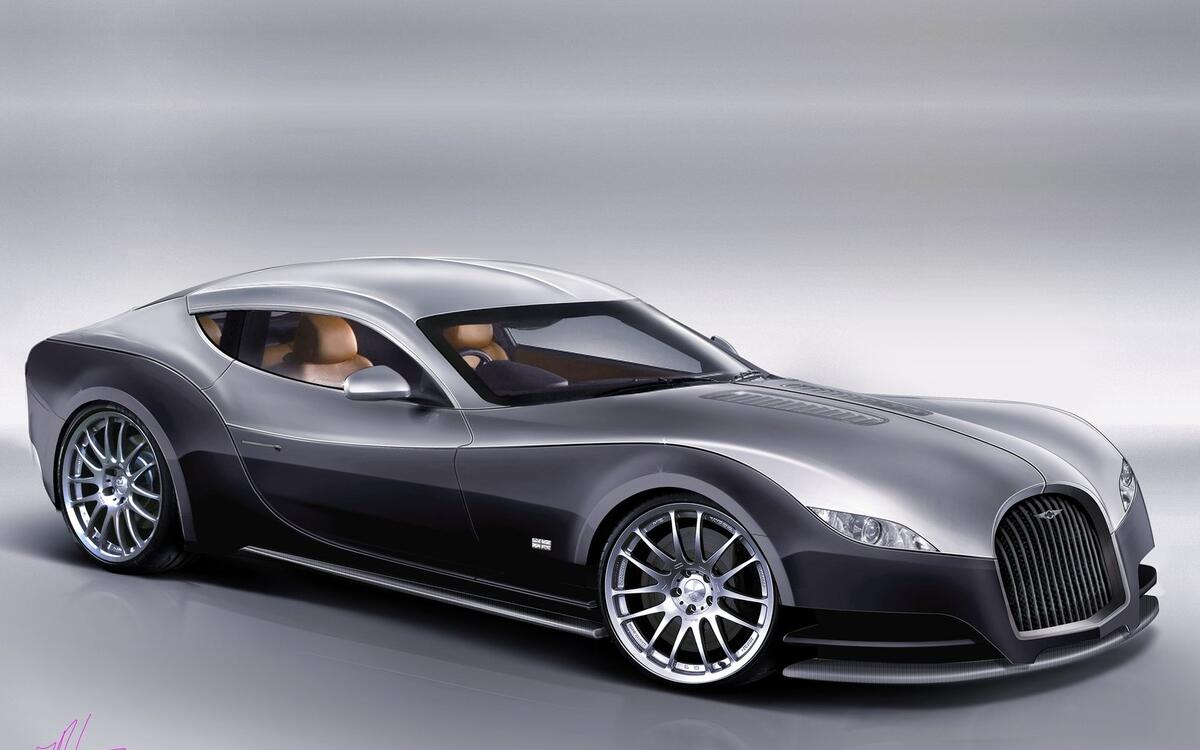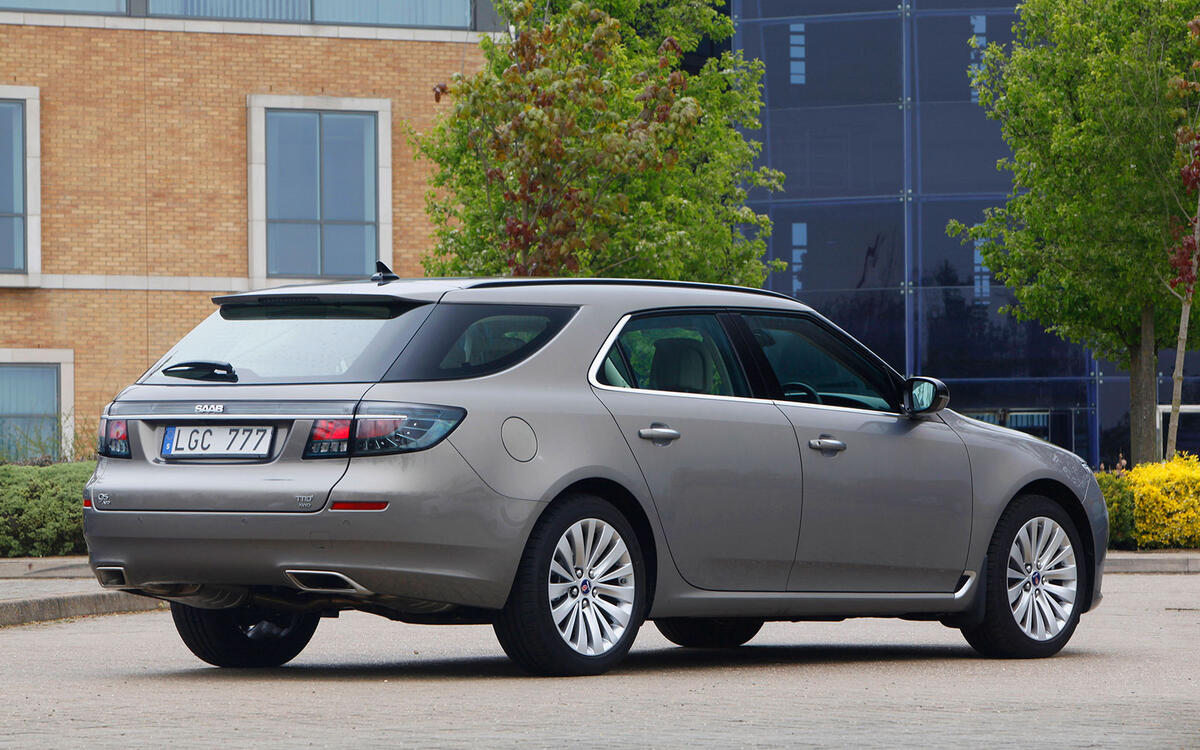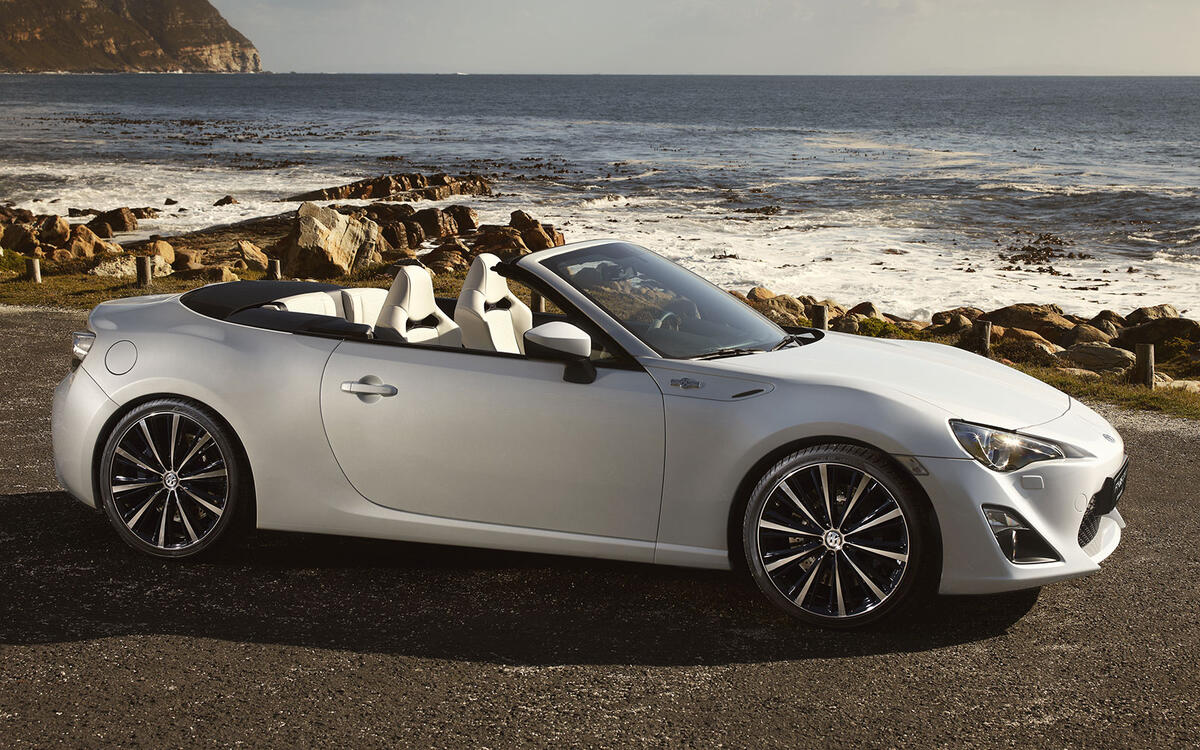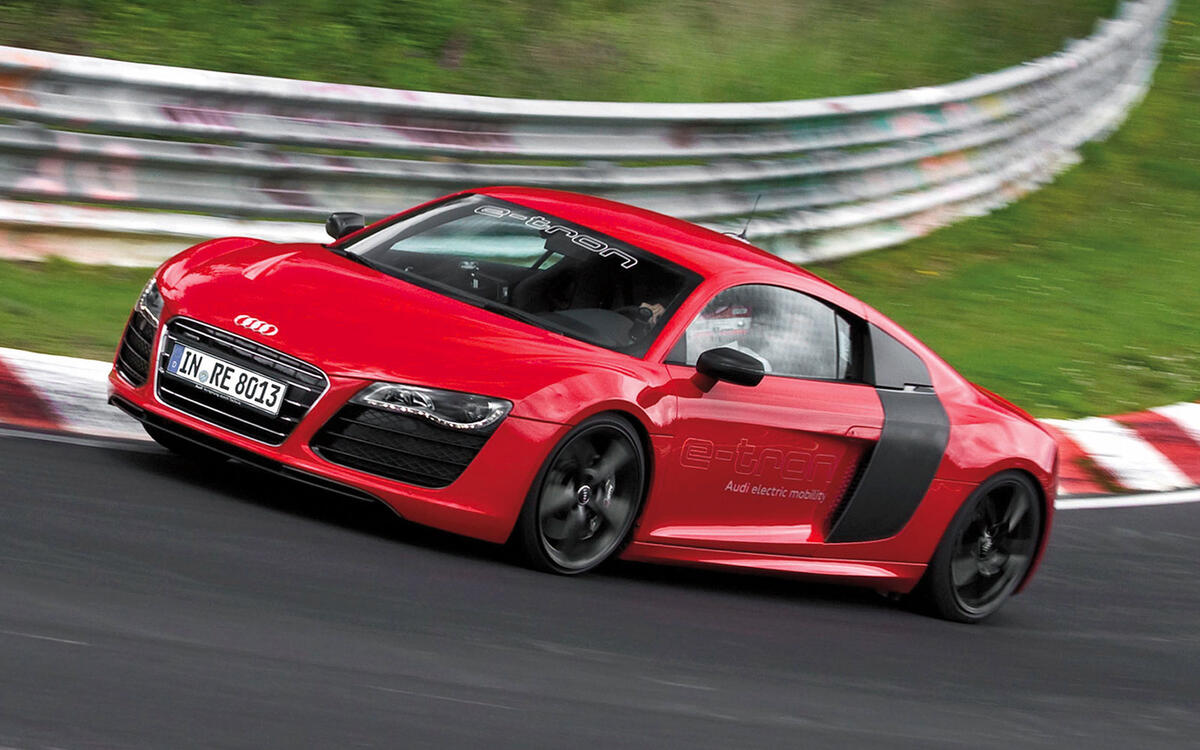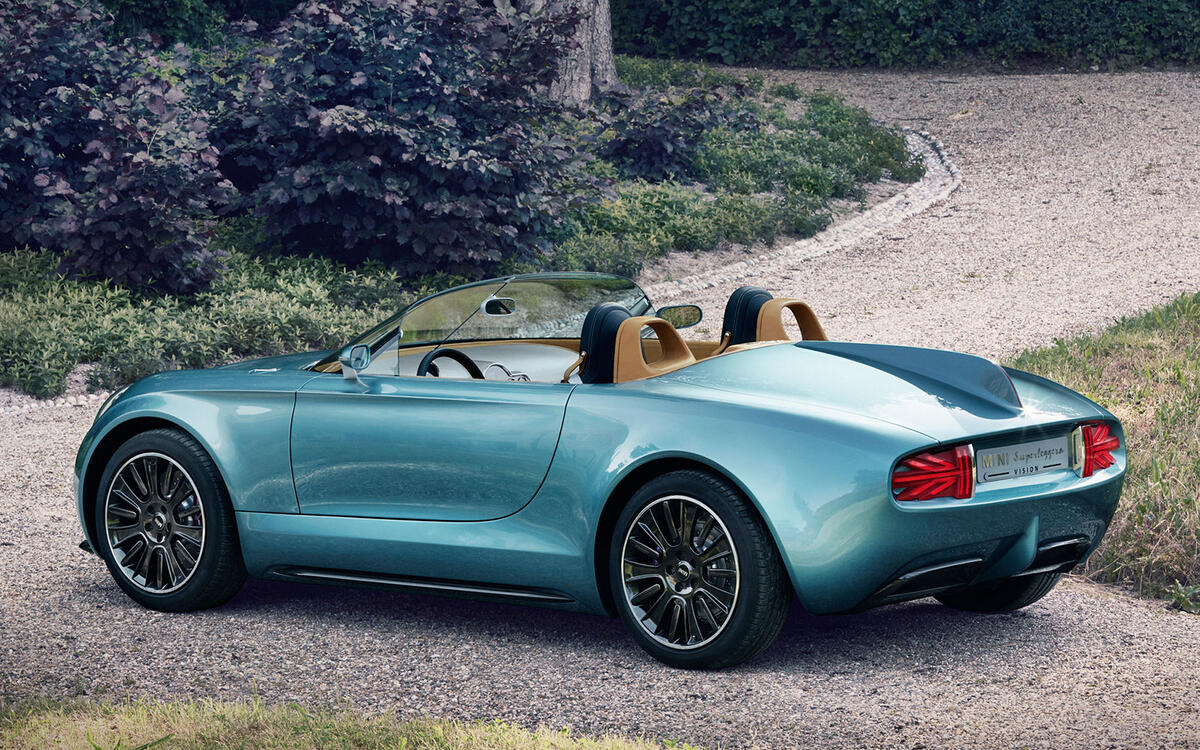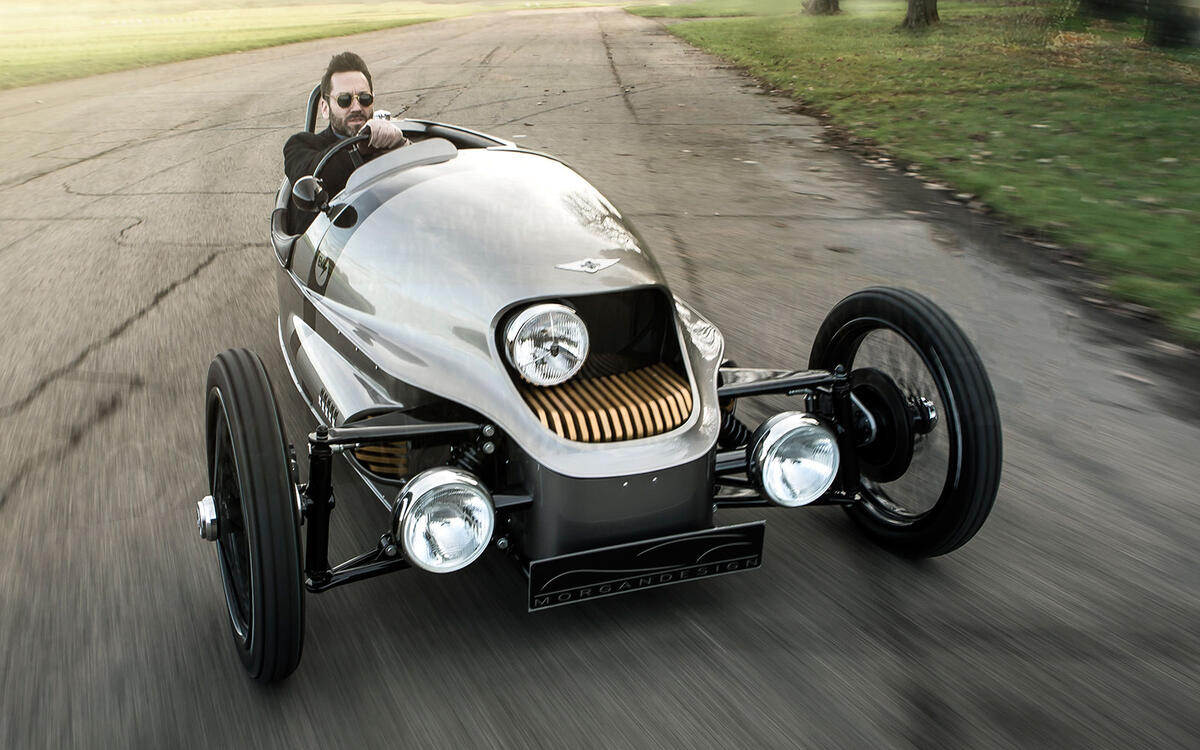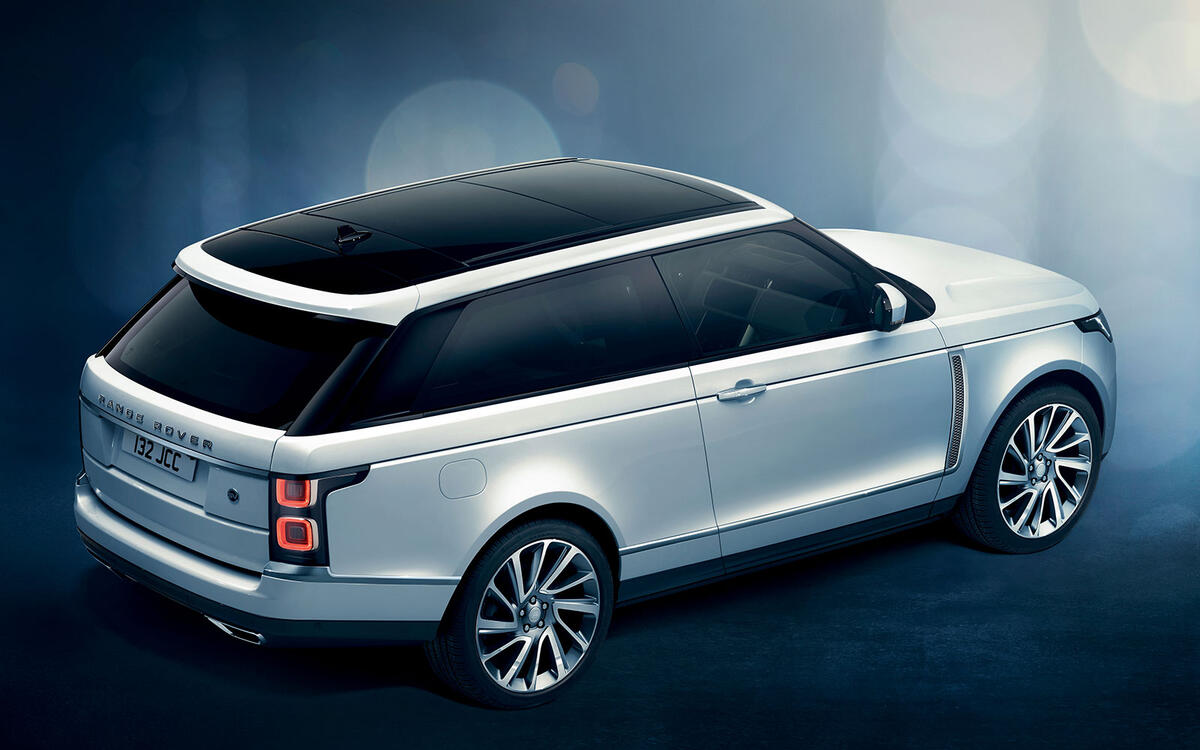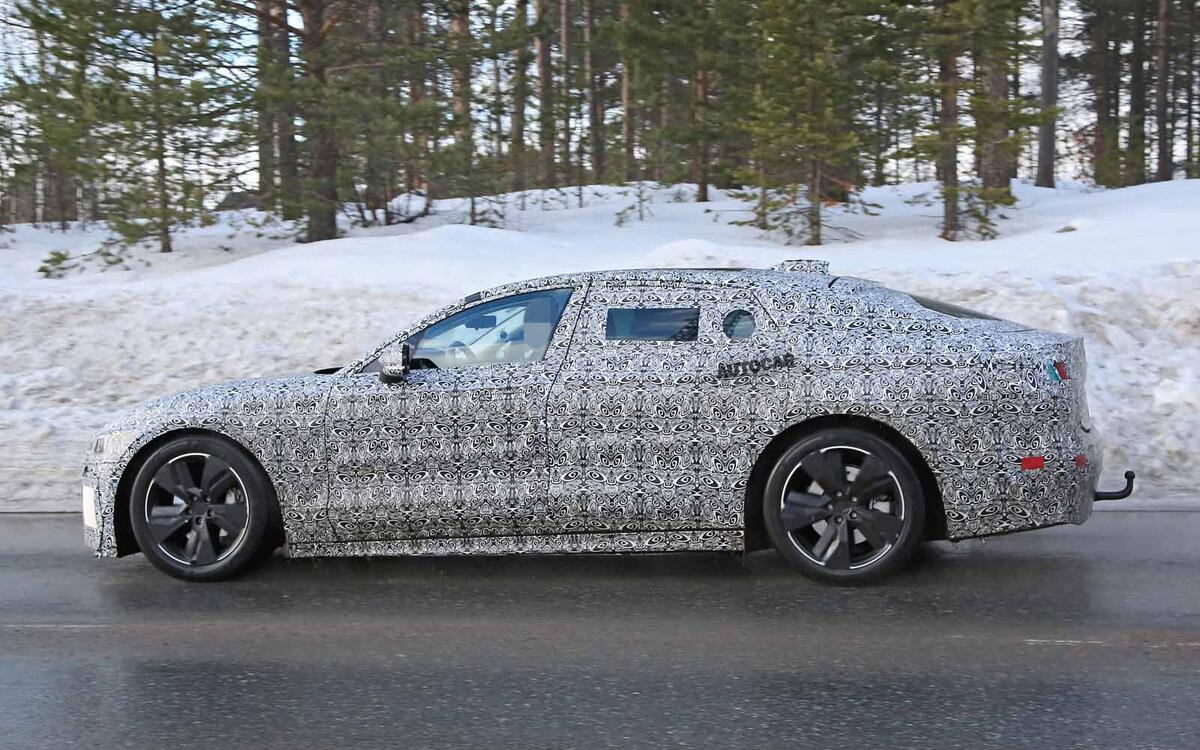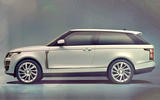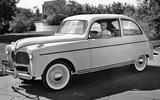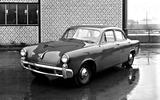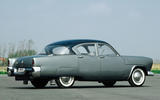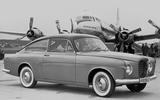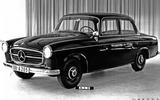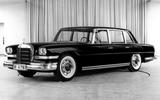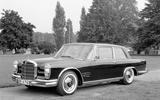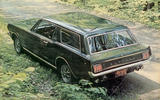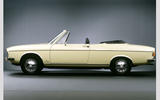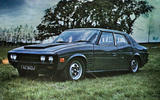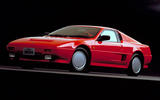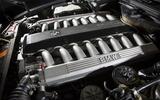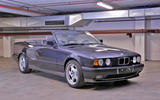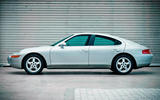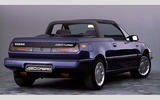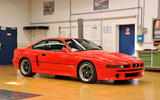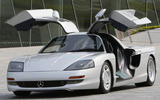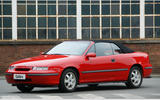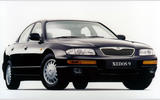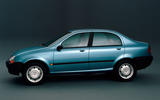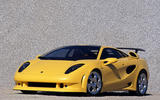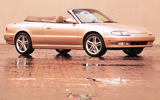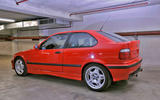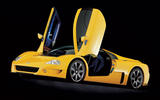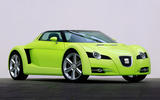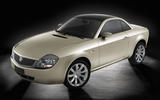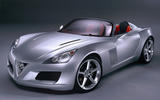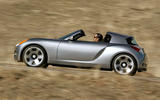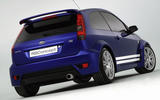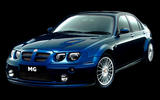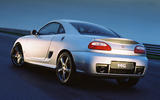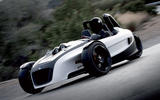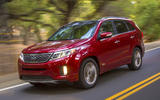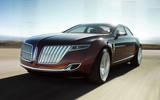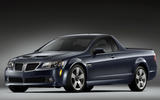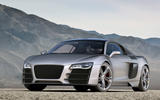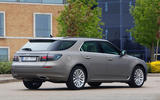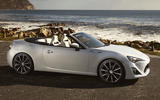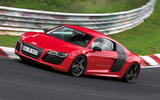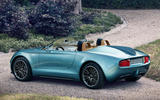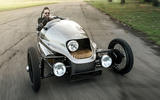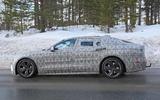 Slide of
Slide of
For decades, car makers have invested vast sums of money into new models, or new derivatives of existing models, only for the plug to be pulled before they enter production.
The company might run out of cash, the market might change or the new model might be deemed too radical. Or it might simply be that too late in the day, the car maker realises that the sales aren't there to justify the expense of putting that new model into showrooms. The fabulous-looking Range Rover SV Coupe (pictured) was unveiled at the 2018 Geneva motor show – and promptly axed a year later.
This is by far from the only example of a late stage cancellation. Here are the other famous cars that you should have been able to buy, but for one reason or another you were denied the chance:
 Slide of
Slide of
Soybean car (1941)
Plastic-bodied cars wouldn't become popular until the 1950s, but as early as 1941 Henry Ford had a team of people working on a project to create a new model made of agricultural plastic, supposedly derived from soy beans. Unveiled in August 1941, the Soybean car was developed in fear of steel rationing during World War 2.
These hostilities led to car production being massively curtailed altogether though, which led to the Soybean project being canned.
 Slide of
Slide of
Porsche-Studebaker Type 542 (1952)
Studebaker could trace its roots all the way back to 1852; half a century later it built its first car and by 1954 it had merged with Packard. From here on things went from bad to worse, but in 1952, in a bid to stem the decline, Porsche developed an all-new V6-powered four-door saloon.
But Studebaker's head of engineering, a certain John Z DeLorean (1925-2005), felt it lacked refinement, it was poor dynamically and he hated the design. The car didn't progress beyond the prototype stage and by 1963 Studebaker was out of the car business.
 Slide of
Slide of
Volvo Philip (1952)
When Volvo looked at replacing its PV444 it initially looked at offering something pretty radical, complete with rear wheel spats, heavy chrome bumpers and whitewall tyres. Called the Philip, because its specification was settled on Sweden's Filip day (2 May) in 1950, and designed by the 22 year-old Jan Wilsgaard (1930-2016), the Philip was a proposal to take Volvo upmarket so it would feature an all-new 3559cc V8 engine.
By the time the car had been developed enough to make it reliable Volvo had changed its mind about going too far upmarket and the project was canned, but the car survives in Volvo's Gothenburg museum.
 Slide of
Slide of
Volvo P179 (1952)
Another potential PV444 replacement was the PV179. Development started in 1952, and once again Jan Wilsgaard came up with the design. The PV444's mechanicals were carried over but the bodywork was largely new, aside from the roof. But the car was deemed too big, heavy and ungainly to make it to production and when the sole prototype was rolled and destroyed during testing, that was that.
 Slide of
Slide of
The 1950s Baby Benz (1953)
Mercedes-Benz unsuccessfully tried launching an entry-level model several times before it introduced the W201 190 in December 1982. In 1953, the company’s board approved the development of a model that would have cost 15 to 20% less than the 170V but the project got cancelled when Daimler took over Auto Union in 1958.
Members of its board pointed out a small Mercedes would have competed against a large DKW and they wanted to avoid all unnecessary overlapping.
 Slide of
Slide of
Volkswagen EA-48 (1953)
The 1959 Austin Mini justifiably receives credit for laying out the basic foundations of the modern city car. Volkswagen almost beat its British rival to the punch. In 1953, with Beetle sales stagnating, the young firm started working on a compact car tentatively called 600 that needed to be cheap to operate and spacious in spite of its reduced dimensions. The firm began testing prototypes in 1954.
Called EA-48 internally, the 600 shared very few parts with the Beetle. It boasted unibody construction, a front-mounted engine, front-wheel drive and a McPherson-type front suspension. Power came from an 18bhp flat-twin with a 600cc displacement – essentially a Beetle flat-four engine cut in half.
Volkswagen boss Heinz Nordhoff (1899-1968) ordered engineers to can the project in 1956. Beetle sales were finally beginning to take off and Nordhoff feared the second model would overshadow its bigger sibling at a crucial point in its career.
 Slide of
Slide of
Mercedes-Benz 600 (1960)
Mercedes really made its mark on the post-war world with its 600 'Grosser' saloon, which was offered in standard- and long-wheelbase forms when it was launched in production form in 1963.
But this is how it could have looked; the stacked headlights could have given way to this rather American-looking nose design. Thankfully Mercedes didn't pursue this design and chose instead to use much more Germanic styling for the production 600.
 Slide of
Slide of
Mercedes-Benz 600 Coupe (1965)
The regular- and long-wheelbase variants of the Mercedes-Benz 600 catered mostly to chauffeur-driven buyers. The company tried capturing the top end of the personal luxury car market with a two-door variant of its limousine. Doors aside, the coupe looked almost identical to standard 600 save for a pair of air vents added behind the front wheels.
Mercedes preferred allocating its resources to other projects and the 600 Coupe remained a prototype. The only example built resides in a private collection today, and we suspect it’s extremely valuable.
 Slide of
Slide of
Ford Mustang shooting brake (1965)
Barney Clark worked for Ford's advertising agency, J. Walter Thompson; he teamed up with designer Robert Cumberford and car enthusiast Jim Licata to build a shooting brake based on a 1965 Ford Mustang. They commissioned Italian company Intermeccanica to make the car, with a bottom-hinged tailgate, retractable rear window, relocated fuel filler, and folding rear seats.
They presented the car to Ford, which said no, having already considered the idea when the Mustang was being developed.
 Slide of
Slide of
Ford Comuta (1967)
This was the future of urban commuting when it was unveiled in 1967. The Ford Comuta could travel 40 miles at a steady 25mph and at about half the length of a conventional car, the 2+2 city car was brilliantly compact so it was nippy and easy to park. More of an experiment than a serious production possibility, Ford built two Comutas, one of which is now in the Science Museum in London.
 Slide of
Slide of
Audi 100 cabrio (1969)
Audi launched its 100 saloon in 1968; by 1970 there was a two-door coupé. Sandwiched between these two arrivals was a two-door convertible, developed by Karmann and unveiled at the 1969 Frankfurt motor show.
Karmann was already working with Volkswagen, building the Beetle-based Karmann-Ghia, but sadly there was to be no partnership with Audi, and the drop-top 100 was stillborn. In the event there would be no Audi convertible until the 80-based Cabriolet of 1992.
 Slide of
Slide of
Rover P8 (1971)
The Rover P6 of 1963 had been a technical tour de force and it was ultimately replaced by the SD1 in 1976. But things could have been very different because Rover built half a dozen P8 prototypes and it was this large four-door saloon that could (or even should) have picked up the baton where the P6 left off.
Nobody is certain why the project was canned at the eleventh hour; objections from Sir William Lyons that it would steal sales from Jaguar XJ6 (a new corporate stablemate) are one theory. Another was the prototypes' disastrous showing in crash-testing.
 Slide of
Slide of
Citroën 2CV Super (1974)
The 2CV celebrated its 26th birthday in 1974. Citroën understandably wondered how many more the model would see. It somewhat puzzlingly tried rejuvenating the 2CV by giving it a retro-inspired makeover with styling cues liberally borrowed from the Traction Avant.
Named 2CV Super, it also received a fixed metal roof and a flat-four engine from the GS that required extending the front end. The project reached an advanced stage before Citroën canceled it.
 Slide of
Slide of
Volkswagen Passat GTI (1977)
In 1977, Volkswagen stuffed a 110hp, 1.6-liter four-cylinder from the Audi 80 GTE into the Passat’s engine bay. The firm also installed bigger brakes on both axles, wider tires and a sporty-looking body kit that created a visual link to the Golf GTI. Called Passat GTI, the two-door prototype was tested on the roads around Wolfsburg, Germany, with satisfactory results.
Volkswagen boss Toni Schmucker (1921-1996) shut down the project because he didn’t believe the Passat should morph into a performance car.
 Slide of
Slide of
Nissan Mid4 (1985)
First seen at the 1985 Frankfurt motor show, the Mid4 was Nissan's attempt to take on the likes of Porsche and Lotus. With a mid-mounted 3.0-litre V6, four-wheel drive and four-wheel steering the Mid4 was capable of 155mph and while it was pretty unattractive from the rear, from the front it was quite a looker.
 Slide of
Slide of
Nissan Mid4 II (1987)
Two years after the original Mid4 had been shown, Nissan came up with a sequel. Looking rather more sleek than before (but still better from the front than behind), the Mid4 II also featured a mid-mounted 3.0-litre V6 with twin turbos to give 325bhp. Nissan a lot of testing but decided that the Mid4 would have cost too much to put into production, for the available sales.
 Slide of
Slide of
BMW 767iL (1987)
In the late 1980s, BMW saw an opportunity to introduce a model positioned above the 7 Series. It envisioned a stately flagship with a long list of luxury amenities and a mighty 16-cylinder engine. Engineers began development work in July 1987.
Working under the guidance of engineer Adolf Fischer, they added four cylinders to the 5.0-liter V12 to create a 6.7-liter V16 that provided 408bhp in its most basic state of tune. It stretched about a foot longer than the 12-cylinder so, to test it, BMW needed to remove the 750iL’s radiator and replace it with two smaller radiators installed in the cargo compartment. The setup required adding air ducts covered by fiberglass scoops to the quarter panels.
BMW tested the car – which could have received the 767iL nameplate – but its board decided not to move forward with the project. Its saw no need to move beyond a V12. Daimler cancelled Mercedes-Benz’s W18 engine at approximately the same time for the same reason.
 Slide of
Slide of
BMW M5 E34 convertible (1989)
BMW has offered a drop-top version of each generation of M3 it's made – but it has never put an open-topped M5 into production. It almost did though because in 1989 a soft-top M5 was built and it was set to be revealed at that year's Geneva motor show. But the plug was pulled at the last minute because BMW didn't want to risk losing M3 convertible sales.
 Slide of
Slide of
Porsche 989 (1989)
Porsche believed introducing a sporty, family-friendly saloon would help it claw out of a financial rut in the late 1980s. The 989 was envisioned as a four-door 911, but it ditched the air-cooled flat-six engine for a 4.2-litre V8 closely related to Audi’s eight-cylinder. It provided 350hp in its most basic state of tune.
However Porsche executives cancelled the project in 1991 after realizing the 989 would be far too expensive to design and build. The 996-series 911 borrowed a few styling cues from the 989, but the idea of a Porsche saloon for four was dropped for over a decade.
 Slide of
Slide of
Volvo 480 convertible (1990)
When Volvo unveiled a 480 convertible at the 1990 Geneva motor show the car was claimed to be pretty much production ready. Four prototypes were produced; two in the Netherlands and two in Belgium. But having shown the drop-top 480, Volvo elected not to put it into production, choosing instead to work with the UK's TWR to build the later C70 convertible.
 Slide of
Slide of
BMW M8 (1991)
It would be almost two decades before BMW acknowledged the existence of this car; a 550bhp V12-powered version of the E31 8 Series. That engine was effectively two 3.0-litre straight-sixes combined to create a 6.1-litre V12, which drove the rear wheels via a six-speed manual gearbox.
With just two seats (racing bucket items), race-spec brakes and menacing bodywork the M8 would have made an enticing flagship for BMW, but sadly it wasn't to be. Environmental concerns are thought to have done for it, along with the horrendous early '90s recession.
 Slide of
Slide of
Mercedes-Benz C112 (1991)
Intended to be the road-going version of the Sauber-built 1990 Mercedes C11 Group C racer, the C112 was a spiritual successor to the original 300SL, with its gull-wing doors and supercar performance. The latter came courtesy of a mid-mounted 400bhp 6.0-litre V12, while great attention to weight saving and aerodynamics ensured the car would have been fabulous to drive.
But despite more than 700 orders being placed after the car had been unveiled, Mercedes got cold feet and decided not to build the car, so it could focus on motor sport instead.
 Slide of
Slide of
Opel Calibra convertible (1992)
If ever there was a great-looking car that would look even better as a convertible, it was the Vauxhall/Opel Calibra. Many of the Calibras built were manufactured in Valmet's factory in Finland and it was this independent coachbuilder that made a pair of drop-top Calibras with 2.0-litre eight-valve engines.
One is reputed to have been destroyed in testing while the other survives, but since the project was axed a raft of Calibras have had their roofs sliced off by various companies.
 Slide of
Slide of
Amati (1993)
Here's one for you – not just a model that was canned, but an entire brand. Toyota was busy launching Lexus, Honda had Acura and Nissan had Infiniti. Mazda didn't want to be left out so it created its own luxury brand called Amati, which was due to launch in the US in 1993. But Mazda realised the sums didn't add up and it pulled the plug – but we did get the Xedos 6 and Xedos 9, which appeared with Mazda badging.
 Slide of
Slide of
Porsche C88 (1994)
In the 1990s China was trying to encourage overseas car makers to develop new models with the Chinese market in mind. To that end Porsche came up with a low-cost small saloon called the C88, developed in just four months and unveiled at the 1994 Beijing motor show.
But having developed and unveiled the car, Porsche got nothing in return for its efforts with China's car makers using many of the C88's ideas for free. As a result, just one C88 prototype was made.
 Slide of
Slide of
Lamborghini Cala (1995)
Lamborghini was owned by Chrysler until 1994, when it was then sold to Megatech. Starved of funds, Italdesign came up with a junior supercar for Lamborghini, called the Cala. Powered by a mid-mounted 4.0-litre V10, the Cala was fully functional and work progressed to make the car production ready.
But it didn't progress very quickly and when Lamborghini was sold to Volkswagen in 1998, the Cala became merely a museum piece.
 Slide of
Slide of
Mazda MX-6 convertible (1995)
Here's one that we don't know very much about: a drop-top Mazda MX-6 created for the US market in around 1995. We're pretty sure the work was done independently of Mazda by a company such as ASC; we also think that just the one prototype was made for evaluation purposes. If you know more about this one-off that Mazda decided not to put into production just drop us a line.
 Slide of
Slide of
BMW M3 Compact (1996)
Here's one that didn't make it, but if it had done so it would have been epic with its light weight (1300kg) and a storming 321bhp 3.2-litre engine. The idea was to produce a smaller, more affordable M car for younger buyers, but BMW got cold feet and the E36-based M3 Compact was shelved after just a single prototype had been made.
 Slide of
Slide of
Volkswagen W12 (1997)
No other car maker had a W12 engine in its armoury, so Volkswagen did something pretty special with its new powerplant in 1997; it created a mid-engined supercar called the W12 and the best bit was that it was going to go into production. The engine in that first prototype displaced 5.6 litres but later would come a 6.0-litre car plus a roadster.
The W12 went on to break records galore at the Nardo test track in 2002, but already by that point the W12 was never going to reach production. VW boss Ferdinand Piëch (1937-2019) had decided that it would be its Bugatti brand that would launch a no-holds-barred hypercar - and not Volkswagen - which it did with the Veyron in 2005; it had a 8.0-litre W16 engine.
 Slide of
Slide of
Seat Formula (1999)
Designed very much in the mould of the Lotus Elise, which at that time was a recently introduced model, the Seat Formula featured a mid-mounted turbocharged 2.0-litre four-cylinder engine rated at 240bhp.
With a kerb weight of just 900kg, performance was scintillating with 0-62mph taking less than five seconds. With the Volkswagen Group keen to boost Seat's sporting credentials, the Formula was initially seen as the way to go, but sadly it wasn't to be and VW decided instead to concentrate on sporty hatches.
 Slide of
Slide of
Jaguar F-Type (2000)
Of course we did eventually get a Jaguar F-Type in 2013, but this is the original concept which was designed by a team led by Geoff Lawson. When he died suddenly in 1999 it was Ian Callum who picked up the baton. Evoking sports cars from Jaguar's heyday, the F-Type was a two-seater roadster powered by a 3.0-litre V6 borrowed from the S-Type.
The car went down a storm, but owners Ford decided to put the cash instead into a Jaguar Formula One racing team, which in the end didn't prove very successful.
 Slide of
Slide of
Lancia Fulvia (2003)
Lancia has pretty much disappeared from view now; aside from a handful of cars sold in Italy each year, the brand is pretty much defunct. How different things could have been if it had offered the Fulvia for sale, rather than resorting to rebadging Chryslers as Lancias, and vice versa.
What’s really tragic is that the Fulvia wasn’t at all innovative so it could easily have been put into production. It used tried-and-tested mechanicals and construction; power came from the same 1.7-litre petrol engine seen in numerous other Fiat group cars. Of all the might-have-beens this is perhaps the one that we mourn the most.
 Slide of
Slide of
Vauxhall VX Lightning (2003)
When Vauxhall/Opel unleashed the Lotus-derived and Lotus-built VX220/Speedster in 1999, it was hoped that this radical (for GM) mid-engined two-seater roadster would sex up the company's image. But despite rave reviews – especially in Turbo form – the VX220 didn't manage to improve the image of Vauxhall or Opel.
When the sequel to the VX220 was unveiled in 2003 to celebrate Vauxhall's centenary, it was hoped that production beckoned, but despite the VX Lightning going down a storm it never made production, although continental Europeans did get a sequel to the VX220 in the shape of the Opel GT, which America also received, albeit under the names Saturn Sky and Pontiac Solstice.
 Slide of
Slide of
Dodge Slingshot (2004)
When you've got an 8.0-litre V10-engined muscle car in your line-up, the idea of a two-seater sports car with a 100bhp three-cylinder engine might seem a bit mad, but that's what Dodge could have had if it had put its Slingshot concept into production.
Based on a Smart Roadster, the Slingshot could have been a success for Dodge in Europe, but parent company DaimlerChrysler was worried that the Dodge might steal sales from the Smart, so the project was shelved.
 Slide of
Slide of
Ford Fiesta RS (2004)
With its original Focus RS, Ford did a pretty good job of boosting its sporting credentials to a whole new generation of hot hatch enthusiasts. In fact the Focus RS was so good that it made the brilliant Fiesta ST seem rather lukewarm, with its 150bhp. What if a 190bhp version was put into production, complete with massively flared wheelarches covering fat alloys?
That's what we got with the production-ready Fiesta RS concept at the 2004 Geneva motor show. Despite massive interest in the new car, Ford had been stung by losses with the Focus RS project so the Fiesta RS was shelved.
 Slide of
Slide of
MG ZT-T XPower 385 (2004)
Whereas the MG ZT 260 was put into series production, with 883 examples made of the Rover 75 and MG ZT combined, the ZT XPower 385 would remain a one-off. The ZT260 featured a naturally aspirated quad-cam Mustang-sourced 4.6-litre V8, but in the XPower 385 a Roush supercharger was fitted to give an exhilarating 380bhp to give 0-60mph in under five seconds.
When MG Rover closed down in spring 2005 the 385 project died with it; just one production car was made along with two or three prototypes.
 Slide of
Slide of
Rover 75 coupé (2004)
One of an array of projects that MG Rover didn't have the money to build – and which would have sold in tiny numbers anyway – was the 75 coupé. Despite heavily smoked glass in the press photo we're pretty sure this was a runner, complete with fully functional interior.
It's all irrelevant anyway, as just the one 75 coupé was made before MG-Rover went down the tubes in 2005. Since then, at least one road-going 75 coupé has been built by an enthusiast (pictured), with others on the way.
 Slide of
Slide of
MG GT (2004)
Completing a trio of prototypes unveiled in 2004, just a year before MG Rover's demise, the MG GT was effectively a fixed-head MG TF with a mid-mounted 2.5-litre KV6 engine. With 200bhp on tap the GT was claimed to be capable of 145mph and 0-60mph in under six seconds.
Although the MG TF went back into production after MG Rover's demise, it was only in soft-top form, with just the one GT prototype built.
 Slide of
Slide of
Volkswagen GX-3 (2006)
When VW unveiled the GX-3 at the 2006 Los Angeles Auto Show the assumption was that this was merely a show car, but the ultra-conservative company looked seriously into putting the car into production. A 1.6-litre engine borrowed from the Lupo GTi hot hatchback gave 0-62mph in 5.7 seconds a 125mph top speed, but litigation concerns put paid to the project.
 Slide of
Slide of
Saab’s Subaru-built crossover (2006)
General Motors owned 20.4% of Subaru parent company Fuji Heavy Industries between 1999 and 2005. Executives saw the partnership as an opportunity to build Subaru’s volume while filling gaps in the Saab portfolio. The Swedish firm launched the Impreza-derived 9-2X in 2004 and planned a 9-6X SUV based on the B9 Tribeca. Saab displays a pre-production prototype in its museum.
The Saab-specific face did little to hide the 9-6X’s Japanese genes. GM canned the project in 2005 when it sold its stake in Subaru’s parent company. And, in an odd twist of fate, Subaru adopted many styling cues seen on the 9-6X in 2008 when it rushed a face-lifted Tribeca to the market.
 Slide of
Slide of
Kia’s American pickup truck (2008)
Kia approved the development of a unibody, lifestyle-oriented pickup truck in 2008. At the time, reports claimed the unnamed model would ride on the same platform as the second-generation Sorento (pictured) introduced in 2009 and come from the company’s factory in West Point, Georgia. If launched, it would have competed in the same market niche as the Honda Ridgeline.
Kia blamed the segment’s decline on high oil prices and cancelled the pickup. “Now is not the right time to produce the truck,” it explained. While it never gave the pickup segment another look, sister company Hyundai will release a unibody truck inspired by the Santa Cruz concept in 2021.
 Slide of
Slide of
Lincoln’s rear-wheel drive flagship (2009)
Ford’s Lincoln division started developing a rear-wheel drive flagship model in the late 2000s. Designers envisioned it as a successor to the body-on-frame Town Car Lincoln stopped making in 2011. Industry reports described a platform developed by Ford’s Australian division and shared across the firm’s portfolio of models. The American market’s sudden shift towards more fuel-efficient vehicles in 2009 stopped the project in its tracks.
Designer J Mays told Automotive News that Ford took rear-wheel drive out of its cycle plan. ‘We’re going down a path right now that is all about fuel efficiency, and we’ve got a lot to do about that. So, we’re not talking about rear-wheel drive. I was very excited about it,’ he added. PICTURE: Lincoln MKR concept pictured.
 Slide of
Slide of
Pontiac G8 ST (2009)
In January 2009, General Motors informed its Pontiac dealers they wouldn’t receive the G8 ST. The car-based pickup was billed as a modern-day Chevrolet El Camino with an added dose of performance. Pontiac had already decided to use a 6.0-liter V8 with 361bhp. The G8 ST would have come from Holden’s Australian factories and executives predicted they could sell about 5000 units annually.
In April 2009, GM announced plans to eliminate the Pontiac brand and phase out all of its models at the end of the following year.
 Slide of
Slide of
Audi R8 TDi Le Mans (2008)
In 2008 diesel power was on the crest of a wave. Sales were strong and so was the product, and at the pinnacle was Audi's twin-turbo V12 diesel engine which was offered in the monstrous Q7 TDi. But Audi wasn't content with having the mother of all SUVs – it also wanted to build the world's first production diesel-engined supercar. Cue the R8 V12 TDi concept.
When it was unveiled at the 2008 Los Angeles Auto Show the car was being mooted for production, but ultimately Audi decided the economics didn't stack up and the car remained unique.
 Slide of
Slide of
Jaguar C-X75 (2010)
Jaguar introduced a futuristic concept car named C-X75 in 2010 to celebrate its 75th birthday. Powered by a turbine-electric hybrid powertrain, the C-X75 generated an overwhelmingly positive response from enthusiasts and Jaguar announced a production run limited to 250 cars. It cancelled the project shortly after because the global recession put a dent in the high-end car market.
In 2015, Autocar reported Jaguar briefly considered rebooting the C-X75 project to mark its 80th anniversary. The project never got off the ground though Jaguar made seven examples of the car (including five used for stunts) for the 2015 James Bond movie Spectre. On his retirement from Jaguar in 2019, design chief Ian Callum said that the cancellation of the project was one of the biggest regrets of his time at the company.
 Slide of
Slide of
Morgan EvaGT (2010)
Morgan unveiled the EvaGT during the 2010 Pebble Beach Concours d’Elegance. The four-seater luxury grand tourer looked considerably less anachronistic than the brand’s other cars. It borrowed its chassis from the Aeromax Supersports and received a BMW-built twin-turbocharged straight-six engine.
Morgan began taking deposits for delivery in 2012. In 2011, Autocar reported a two-year delay as Morgan developed magnesium alloy technology it wanted to incorporate in the design. The firm promised to unveil the car at the 2014 Geneva auto show and begin deliveries shortly after. Dealers confirmed Morgan cancelled the model in 2013. Customers who sent a £5000 deposit could either ask for a full refund or use the sum to buy another model.
 Slide of
Slide of
Saab 9-5 SportCombi (2011)
In late 2009 a second-generation 9-5 saloon entered production and with that car reaching dealerships soon after, Saab's attention could be turned to getting a second-generation 9-5 estate on sale.
A production-ready 9-5 estate (dubbed SportCombi) was unveiled at the 2011 Geneva motor show, but with the company teetering on the brink of bankruptcy series full production was never achieved, with around 40 examples produced. Fun fact: it seems just two examples were produced in right-hand drive, one of which was held in purgatory for a long period at GM’s Millbrook testing facility north of London.
 Slide of
Slide of
Toyota GT86 convertible (2013)
We spotted prototypes testing and Toyota even unveiled an open-topped GT86 concept at the 2013 Geneva motor show (called the FT-86 Open), so a convertible seemed like a dead cert. That concept was mechanically identical to the coupé, and when we saw that prototype in Geneva it looked ready to roll. But within months Toyota had confirmed that the GT86 convertible project was dead.
 Slide of
Slide of
Audi R8 e-tron (2014)
Audi built 10 driveable electric R8s in 2014 and we got to drive one. These prototypes used carbon fibre extensively to cut weight, but the cabins were pretty much the same as the road car's. The soundtrack definitely wasn't, but with 375bhp and 605lb ft of torque on tap the performance was pretty vivid; the e-tron could get from 0-62mph in just 4.2 seconds, but was restricted to 124mph to ensure a decent range.
We were impressed by the R8 e-tron but it never reached production, presumably because Audi couldn't make the sums add up, once again.
 Slide of
Slide of
Mini Superleggera Vision (2015)
Styled by Touring Superleggera, the Mazda MX-5 rival was unveiled at super-posh Italian car show Villa d’este where it went down a storm. The response spurred BMW on to consider production, probably helped by the fact that while some of the details might have to be watered down, the basis could remain untouched – apart from the fact that it didn’t appear to have any weather protection whatsoever. But sadly it wasn't to be.
 Slide of
Slide of
Morgan EV3 (2018)
The Morgan EV3 would have been the proof that electric cars can be immense fun, and Morgan didn't have any trouble selling them once the car had been unveiled in 2015. But the car was being developed in conjunction with Frazer-Nash Research and when that relationship went sour the car was doomed. But maybe one day we'll see something similar…
 Slide of
Slide of
Range Rover SV Coupé (2018)
When Land Rover took the wraps off its £240,000 Range Rover SV Coupé at the 2018 Geneva motor show, it was bullish about the prospects of selling all 999 examples to wealthy style-conscious buyers.
Compared with the regular Range Rover only the front-end and lower tailgate section were carried over, but then Land Rover's sales and profits went into reverse and the SV Coupé was axed in a bid to save cash.
 Slide of
Slide of
Jaguar XJ EV (2021)
A reimagined electric-powered XJ limousine was due to be unveiled in 2021, to join the I-Pace as the company's only EV models. But in February 2021 the company announced that the virtually-completed project would be cancelled, for reasons largely unknown, even though Jaguar is destined to become an EV-only brand in 2025, years before most of its main competitors.
Car makers spend a fortune developing new models, but not all of them make it to the showroom…
Advertisement


